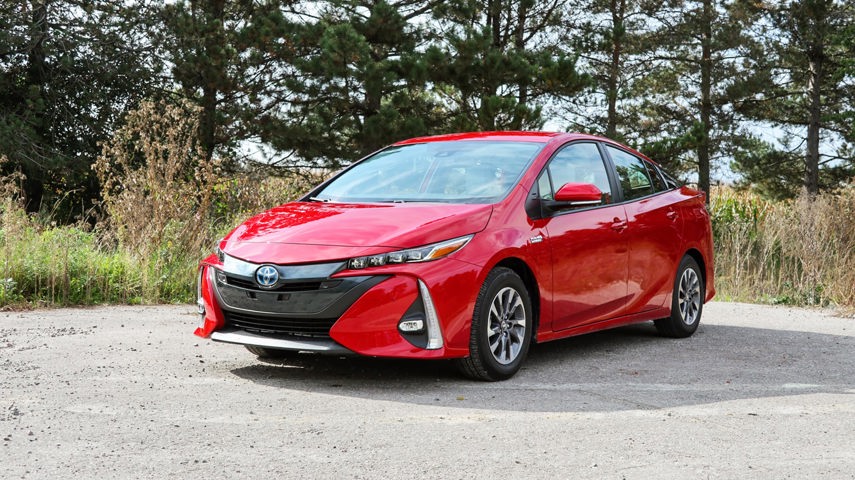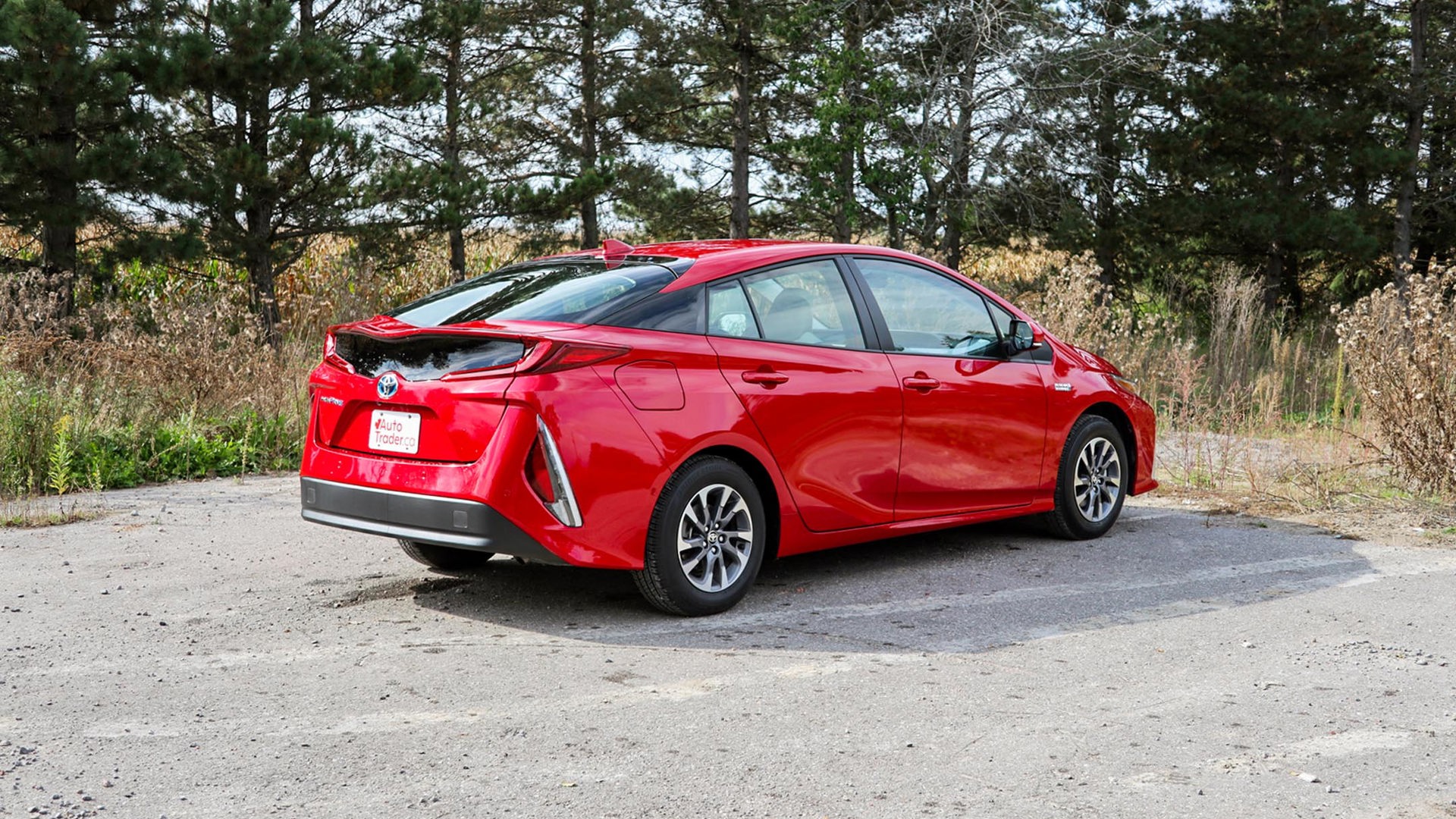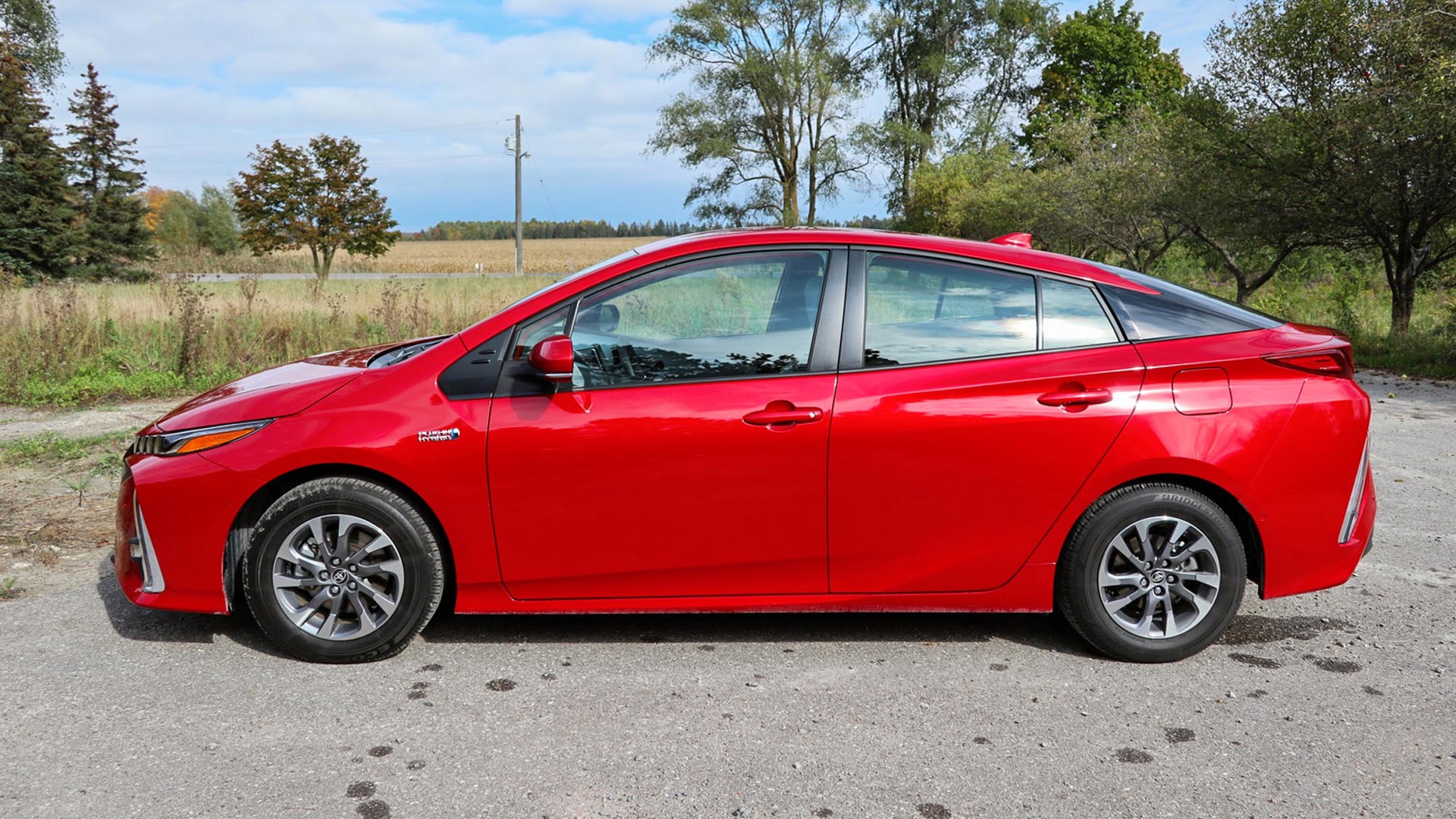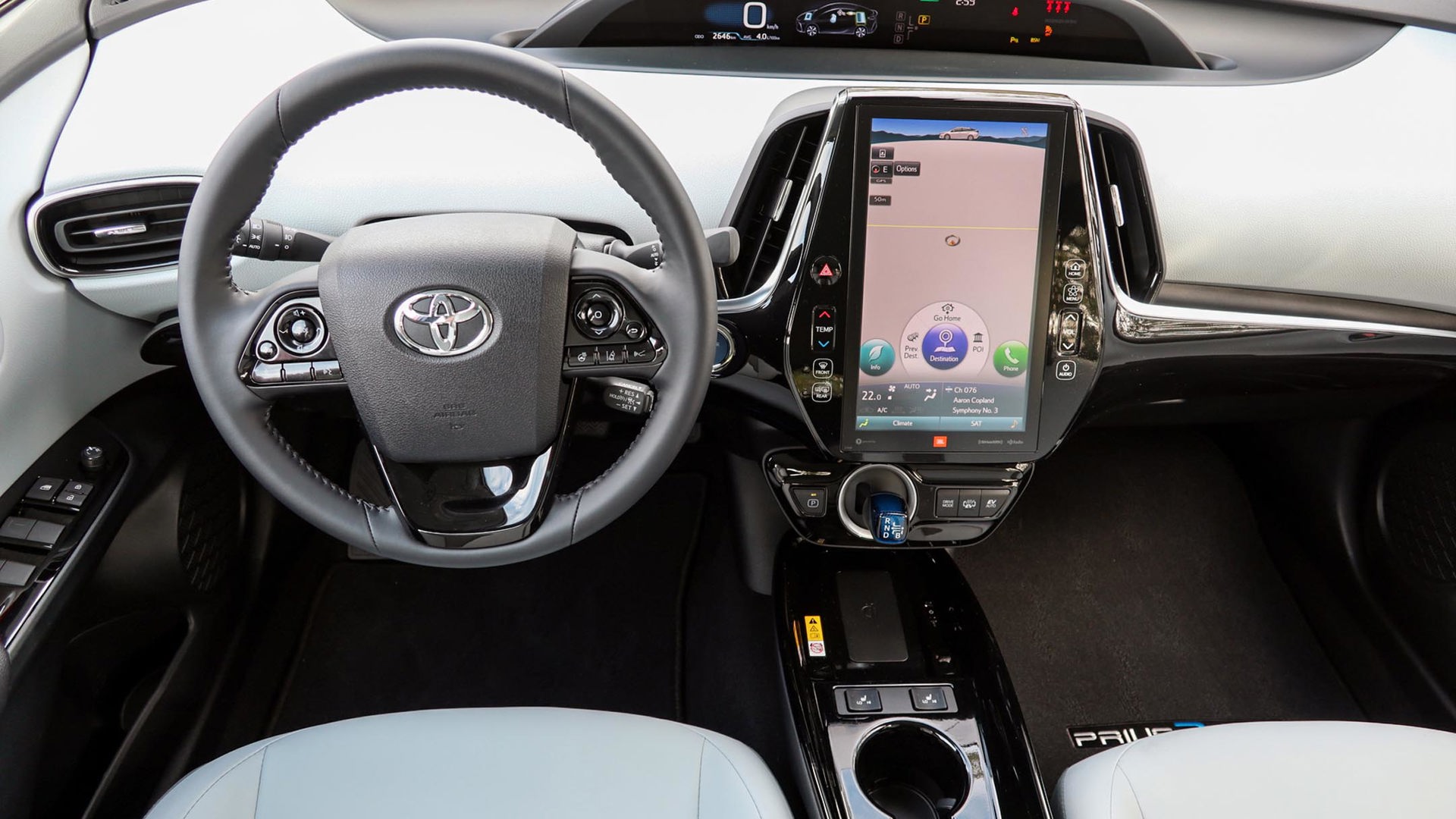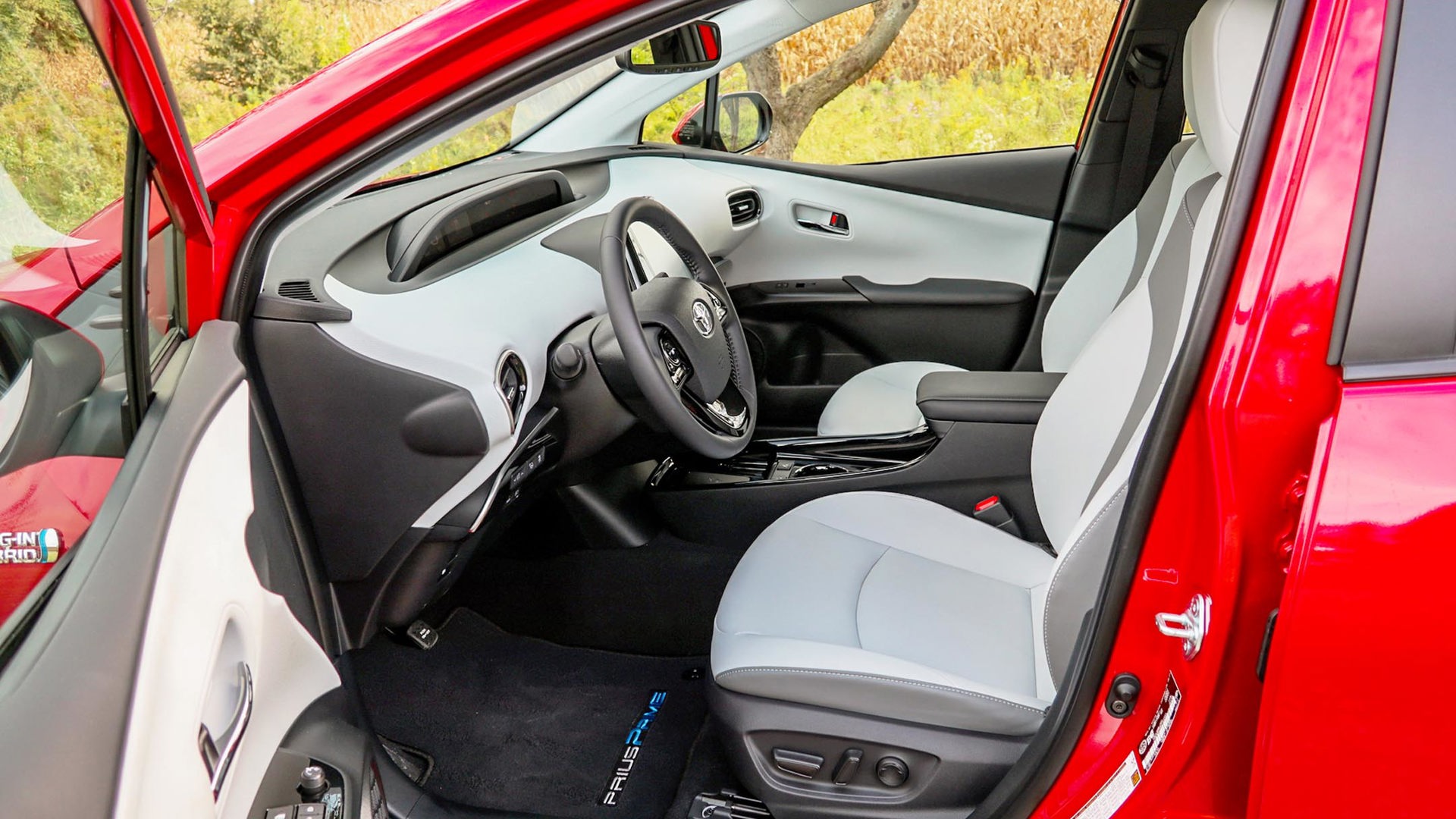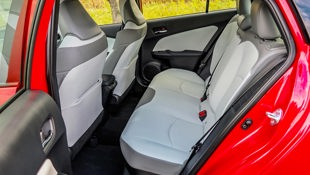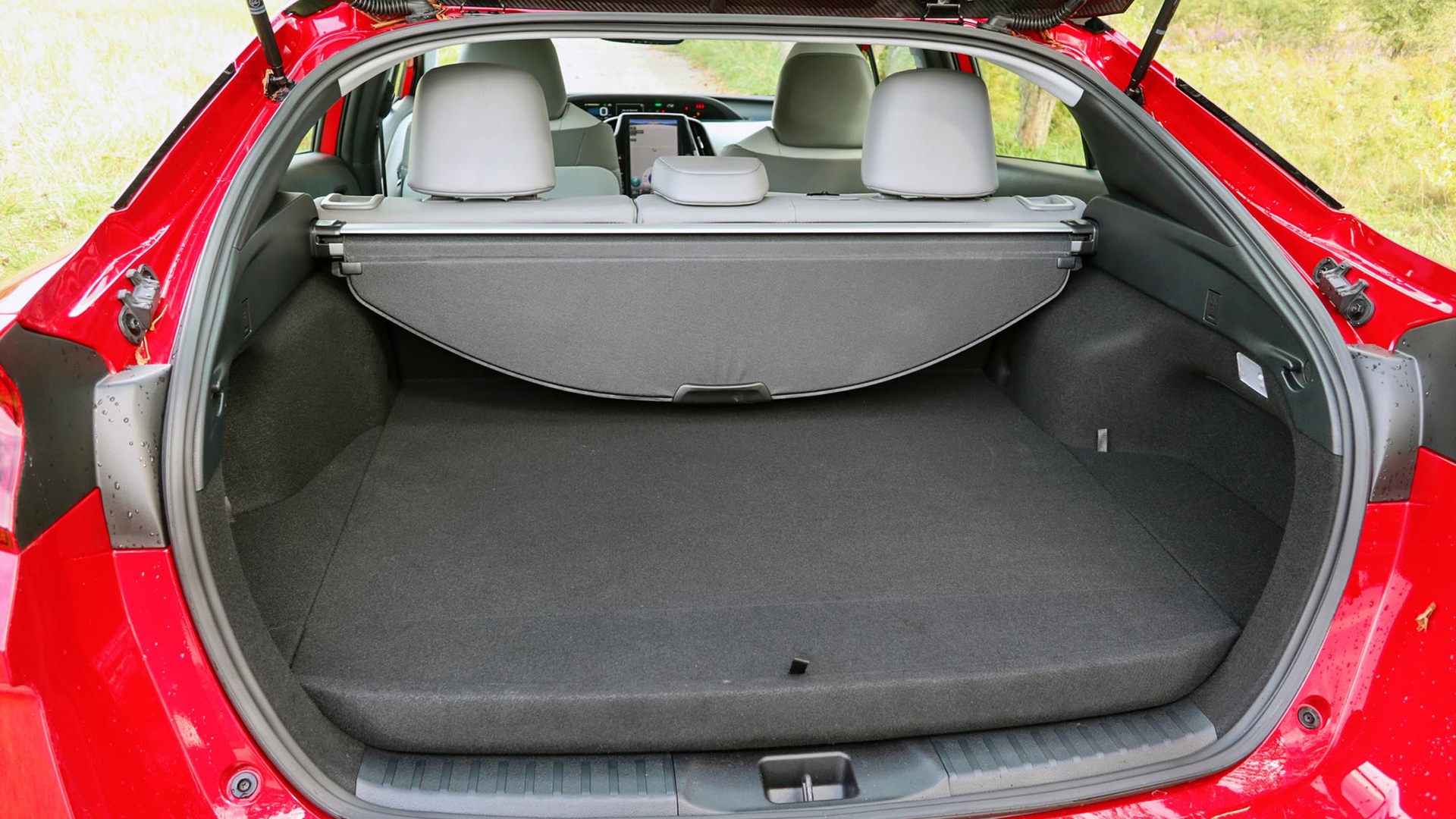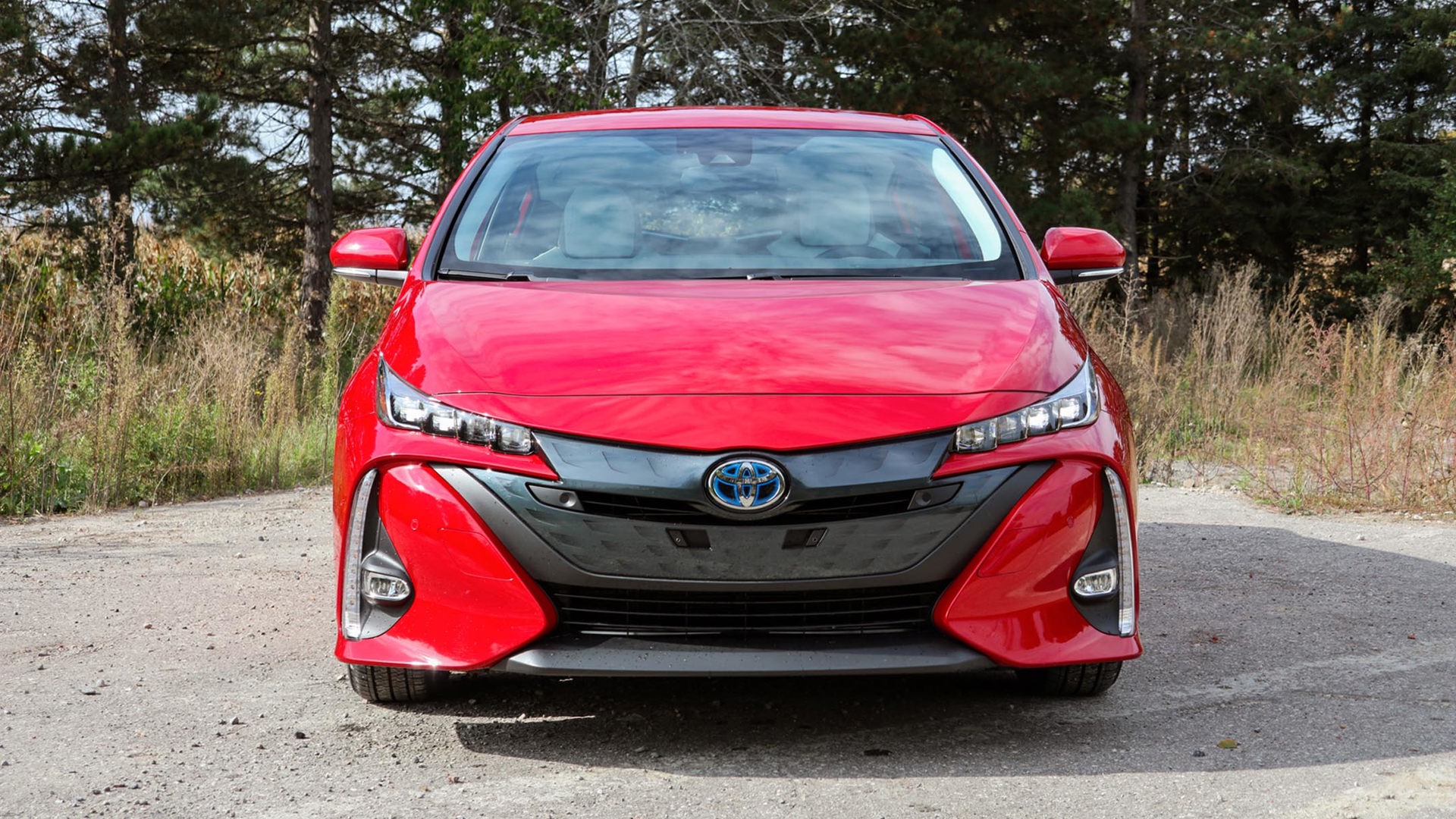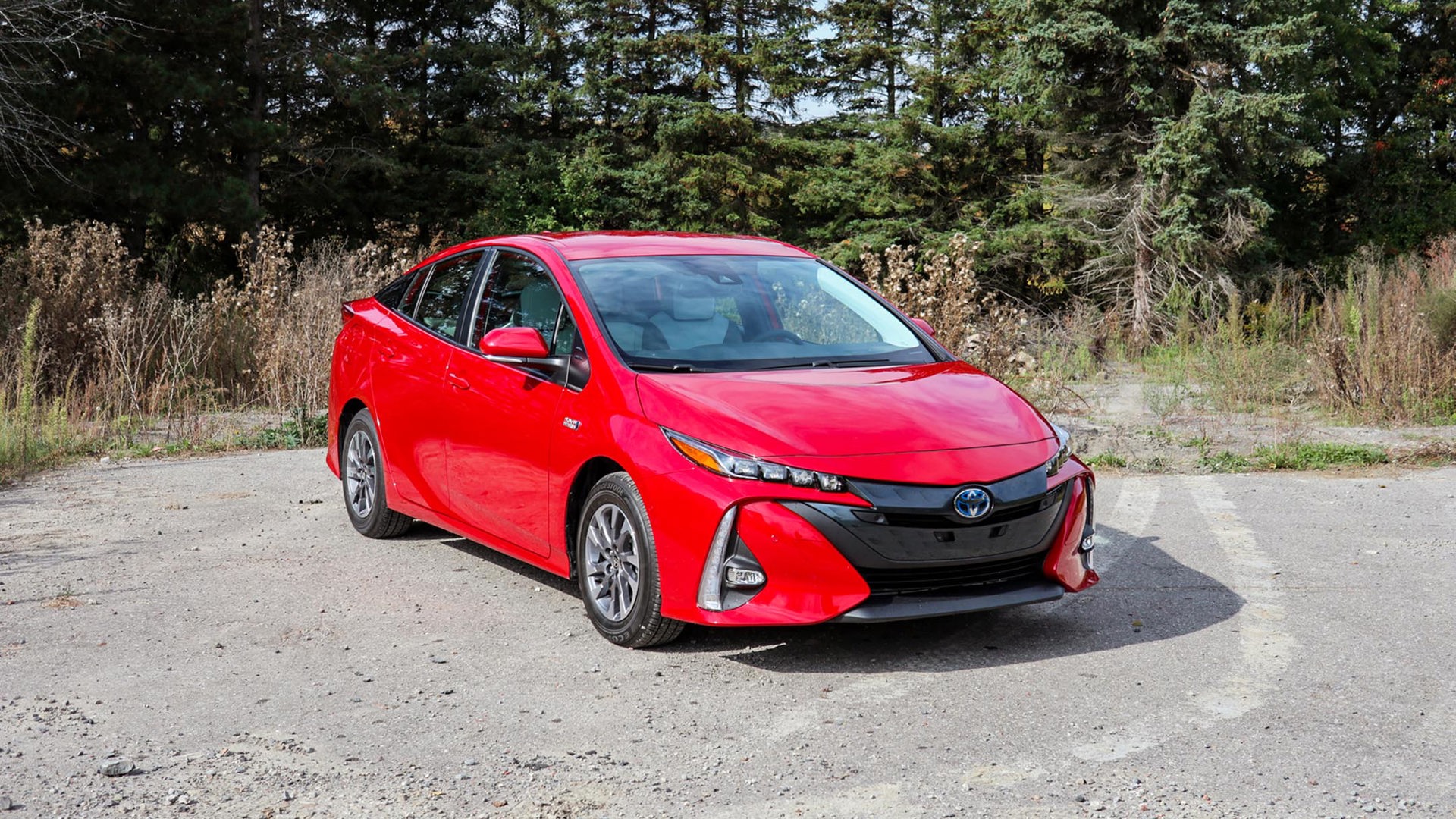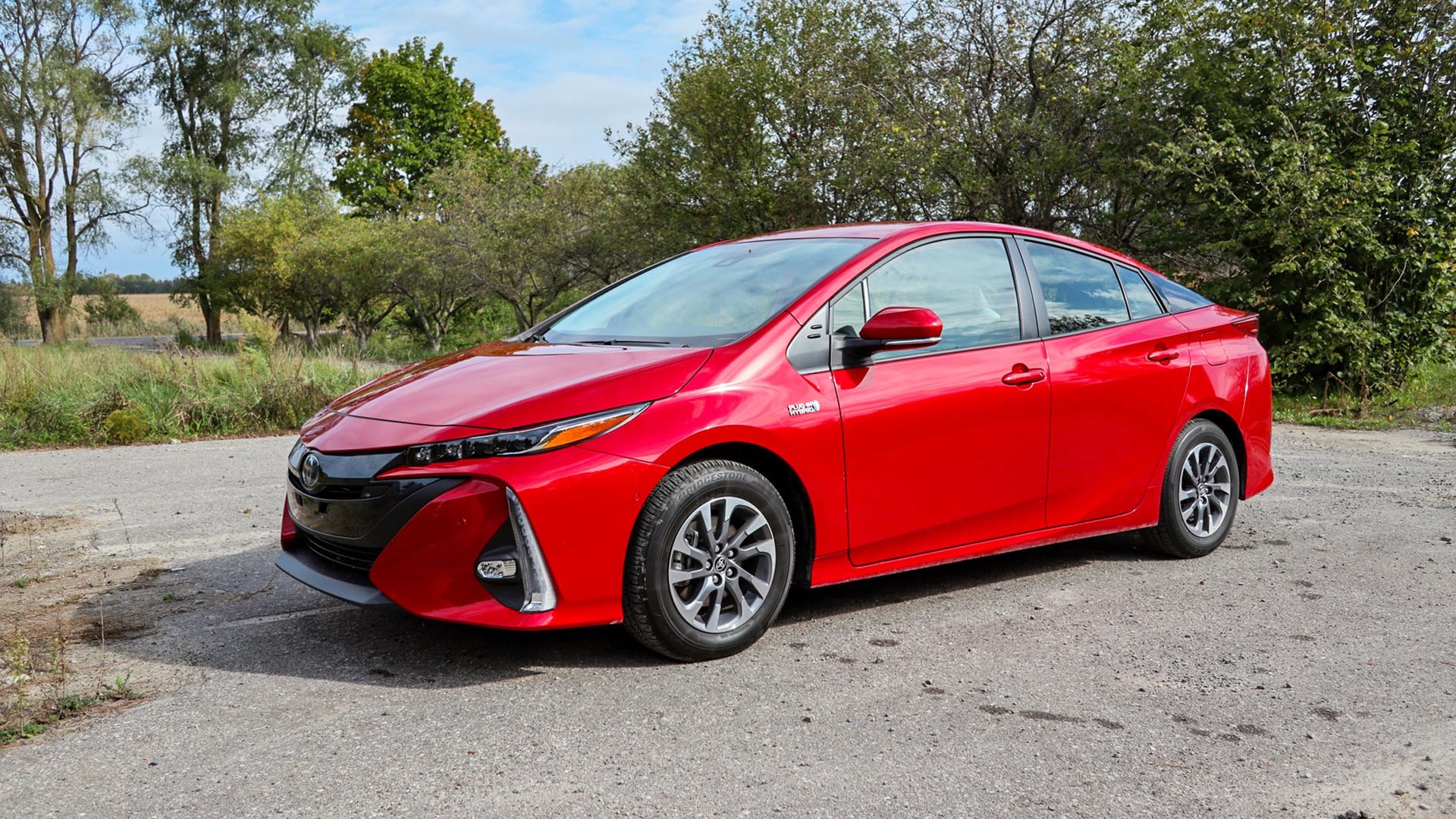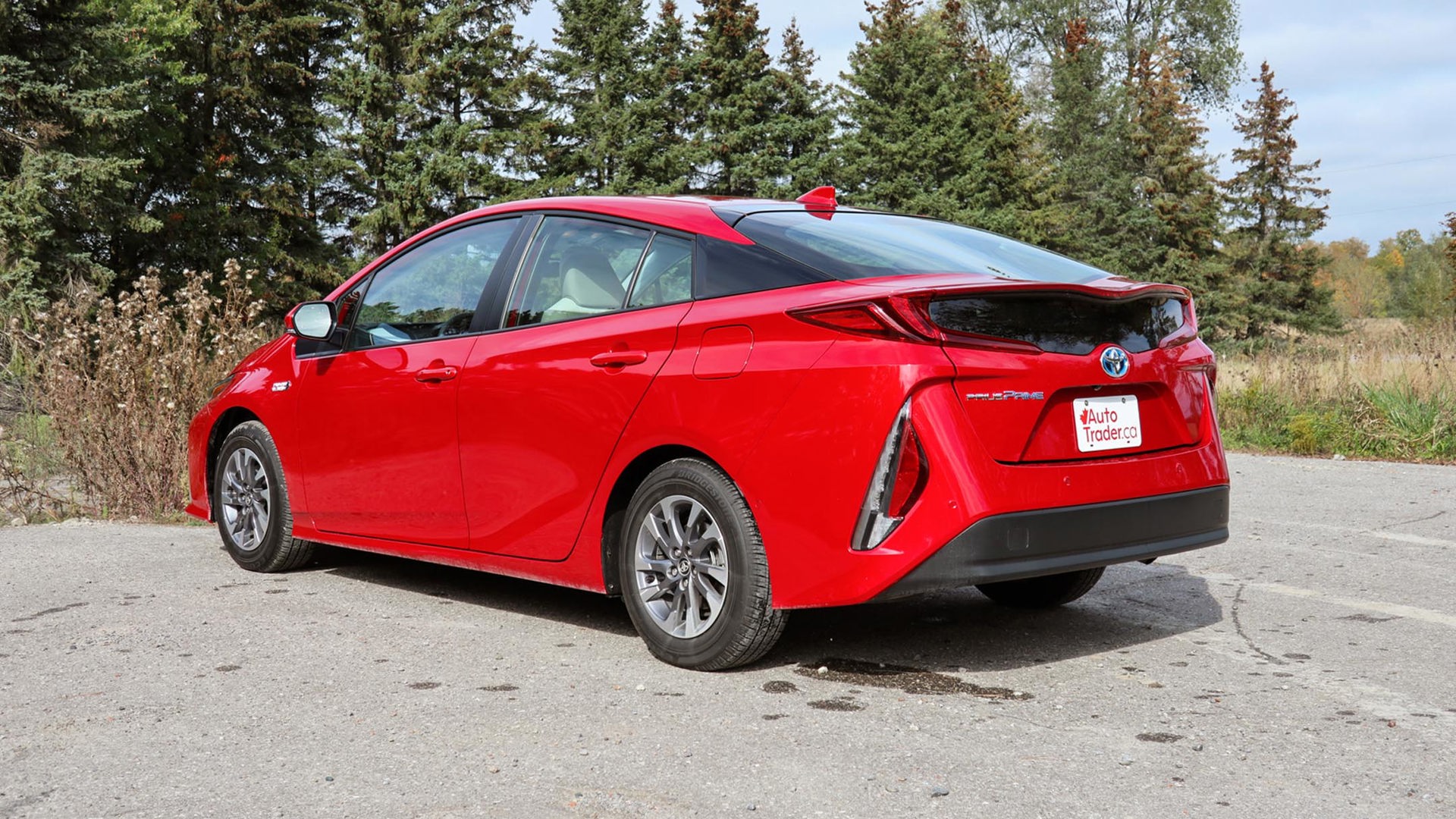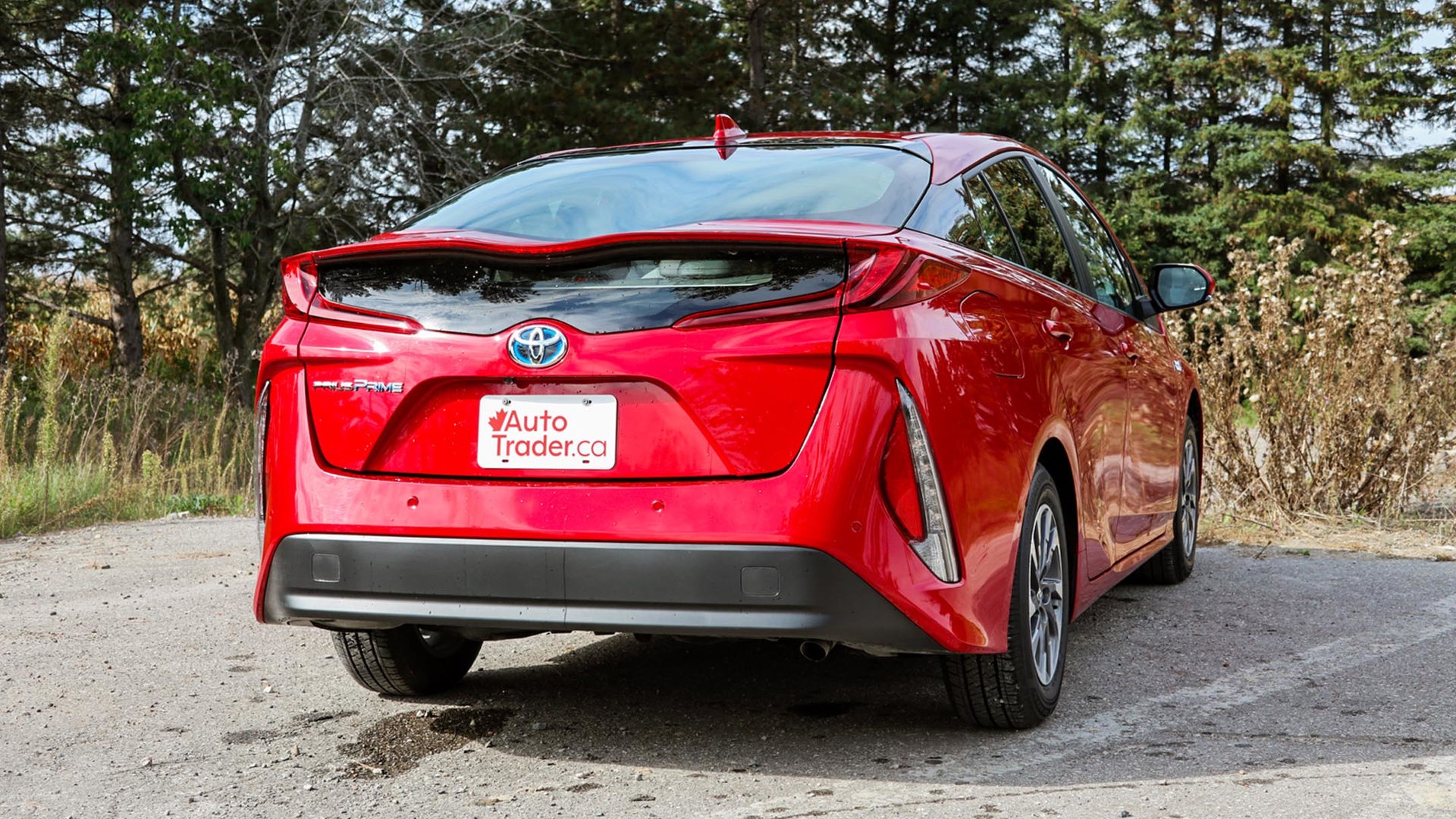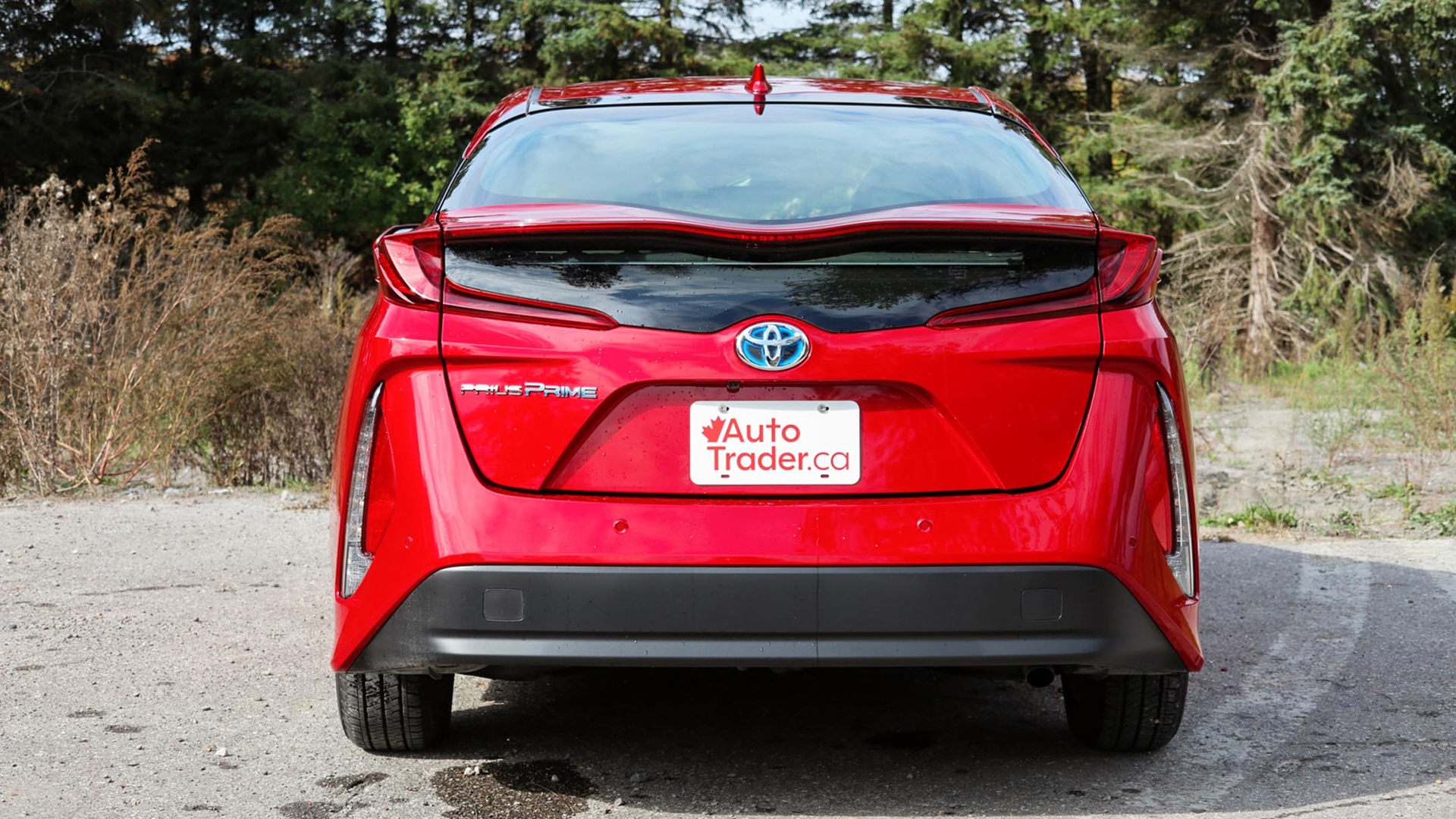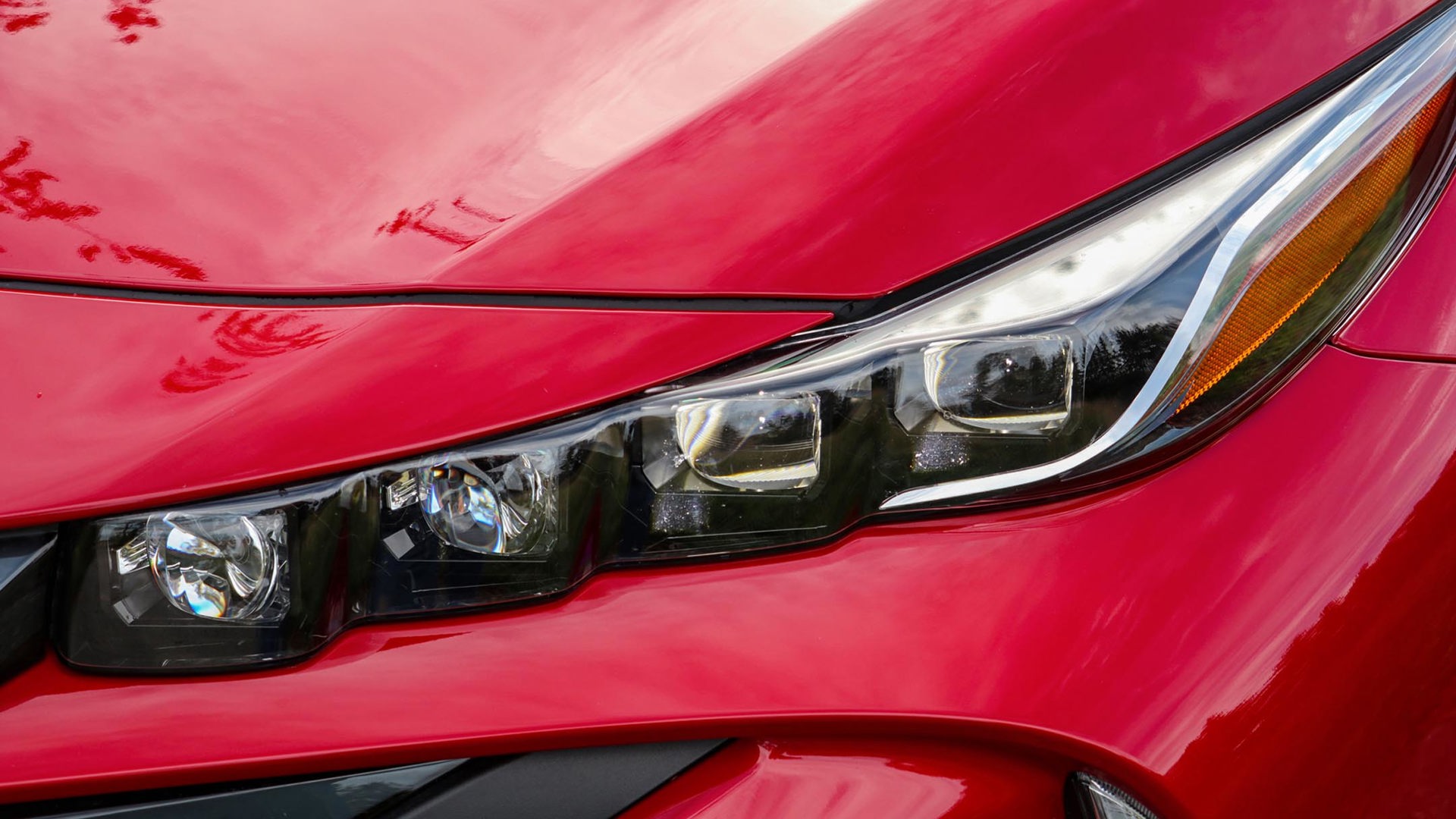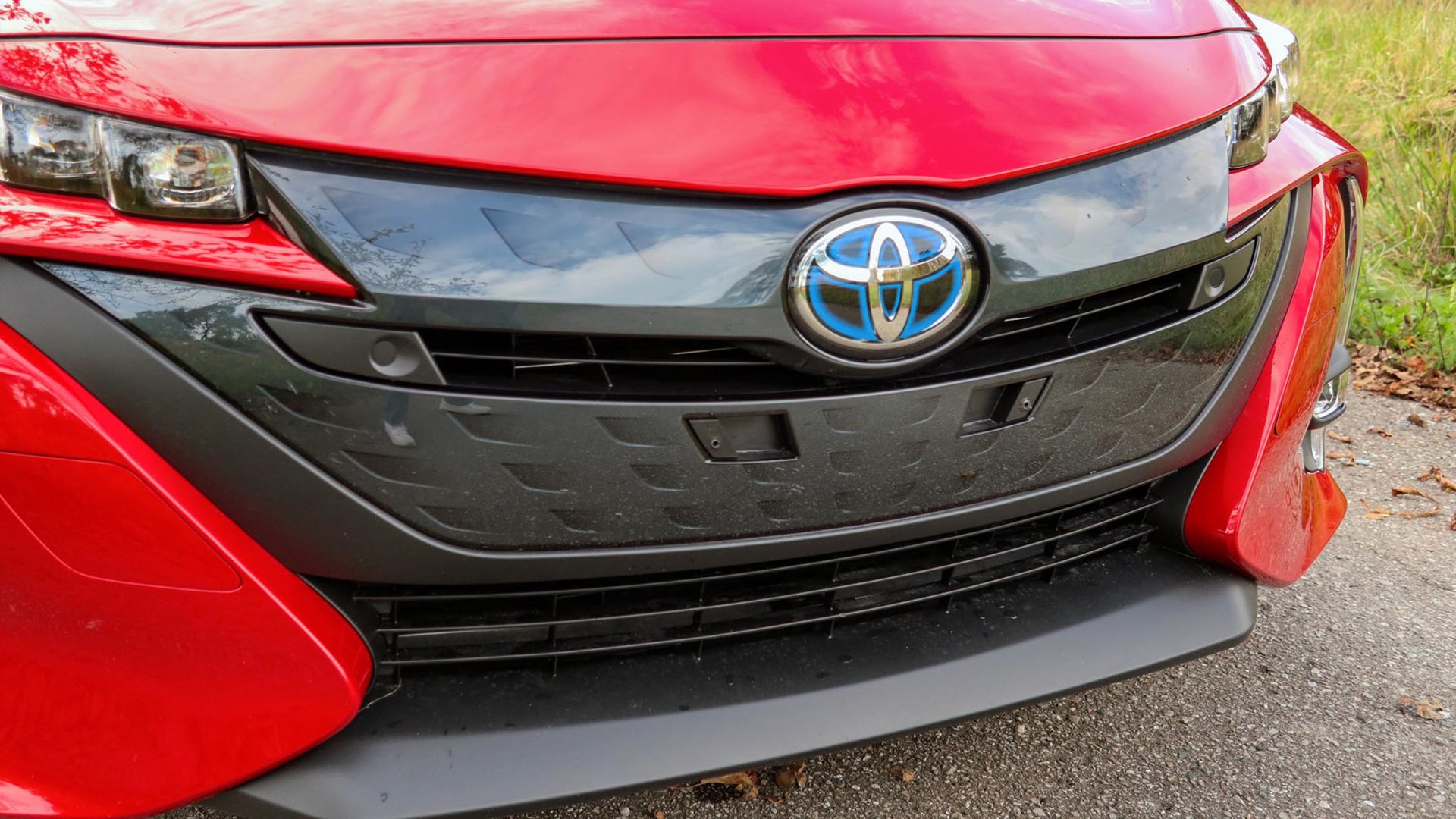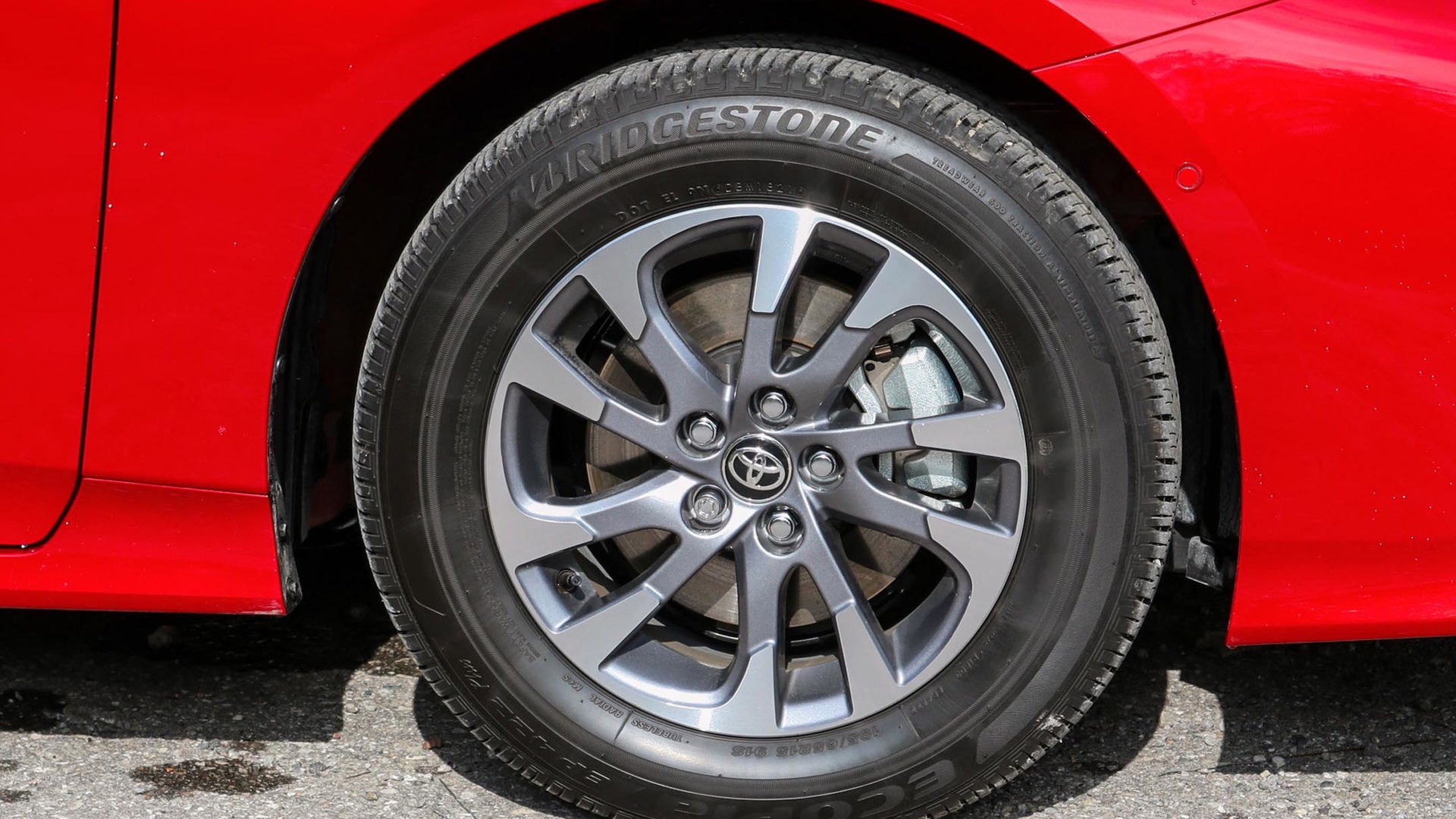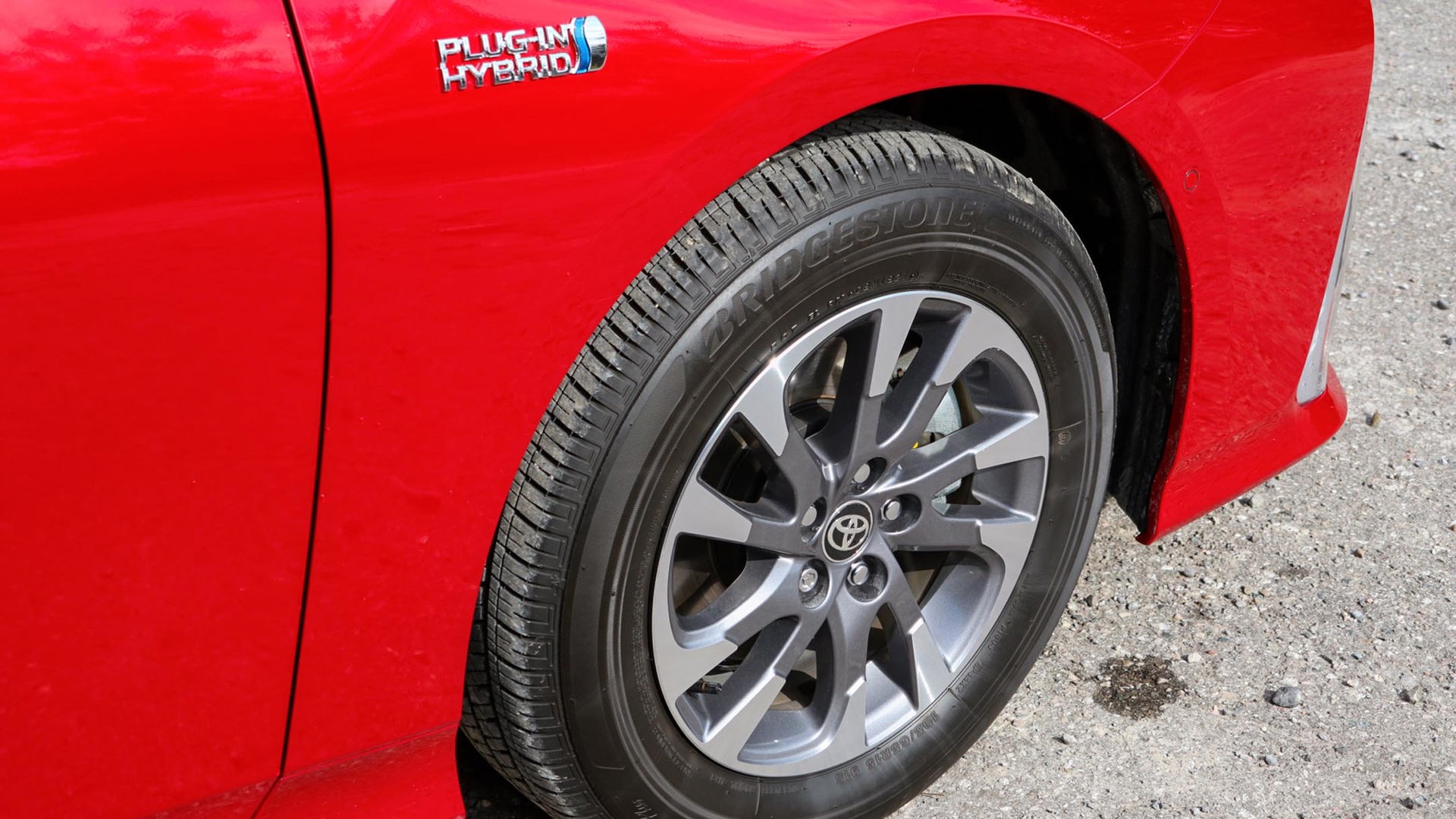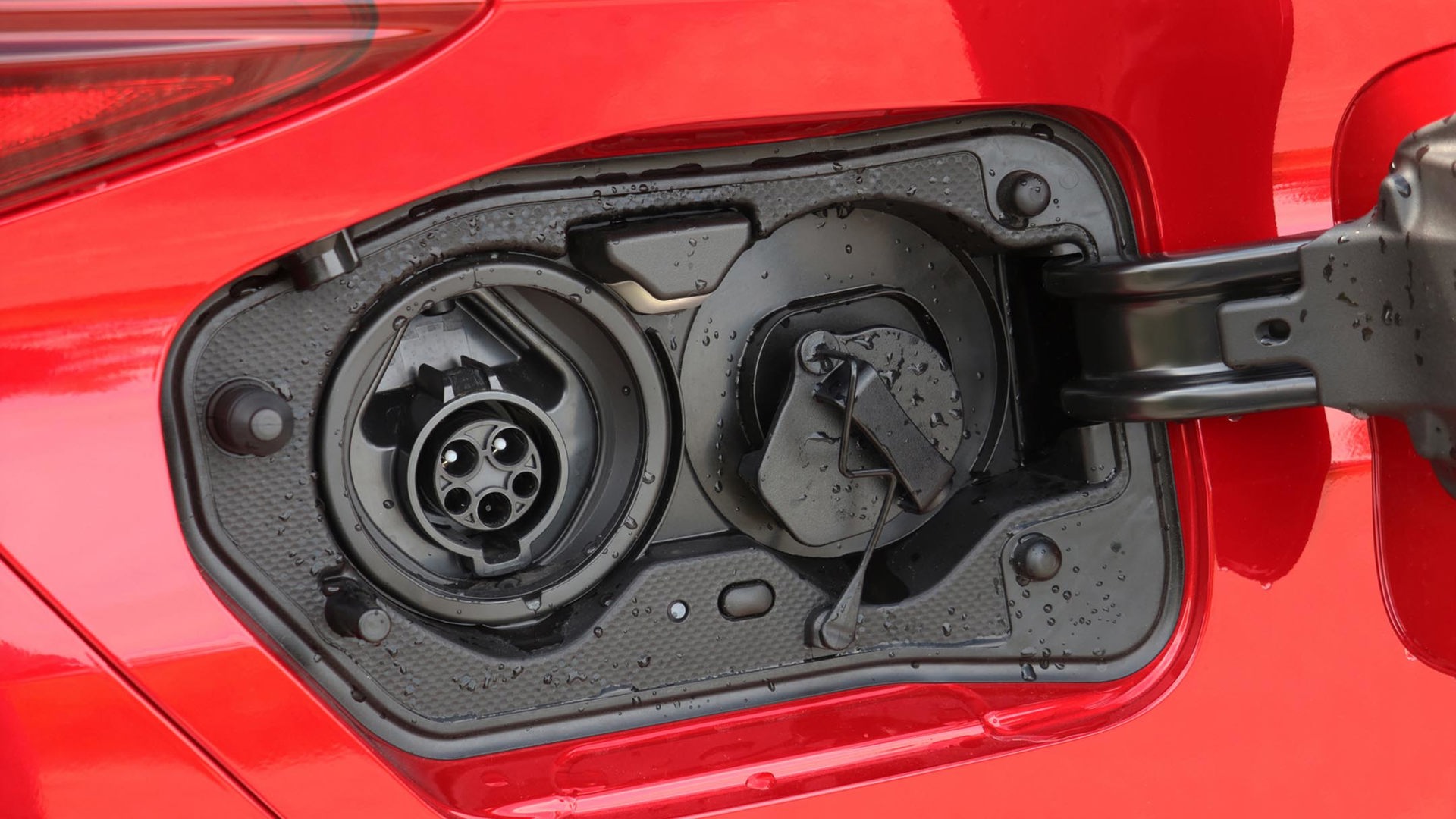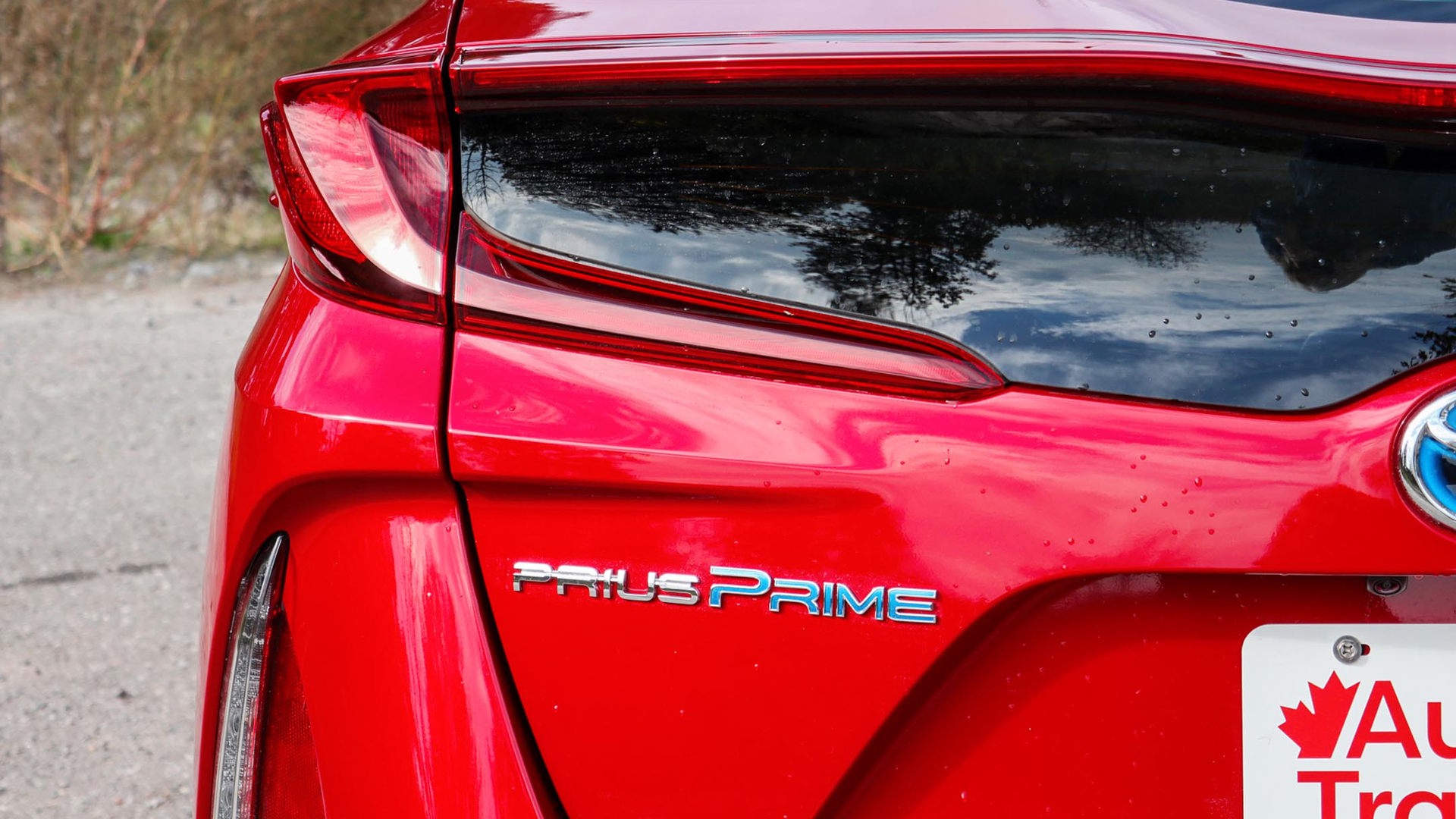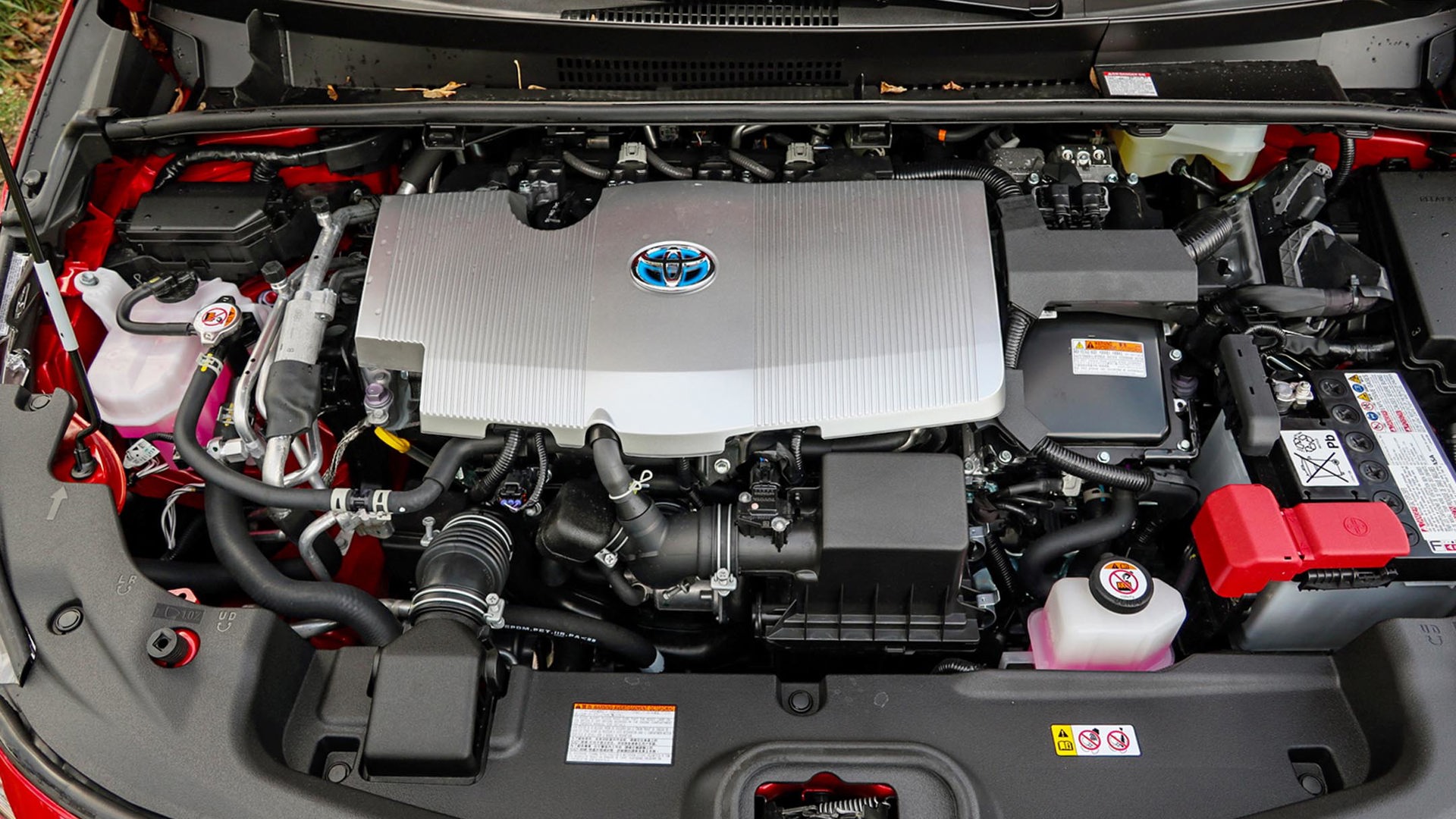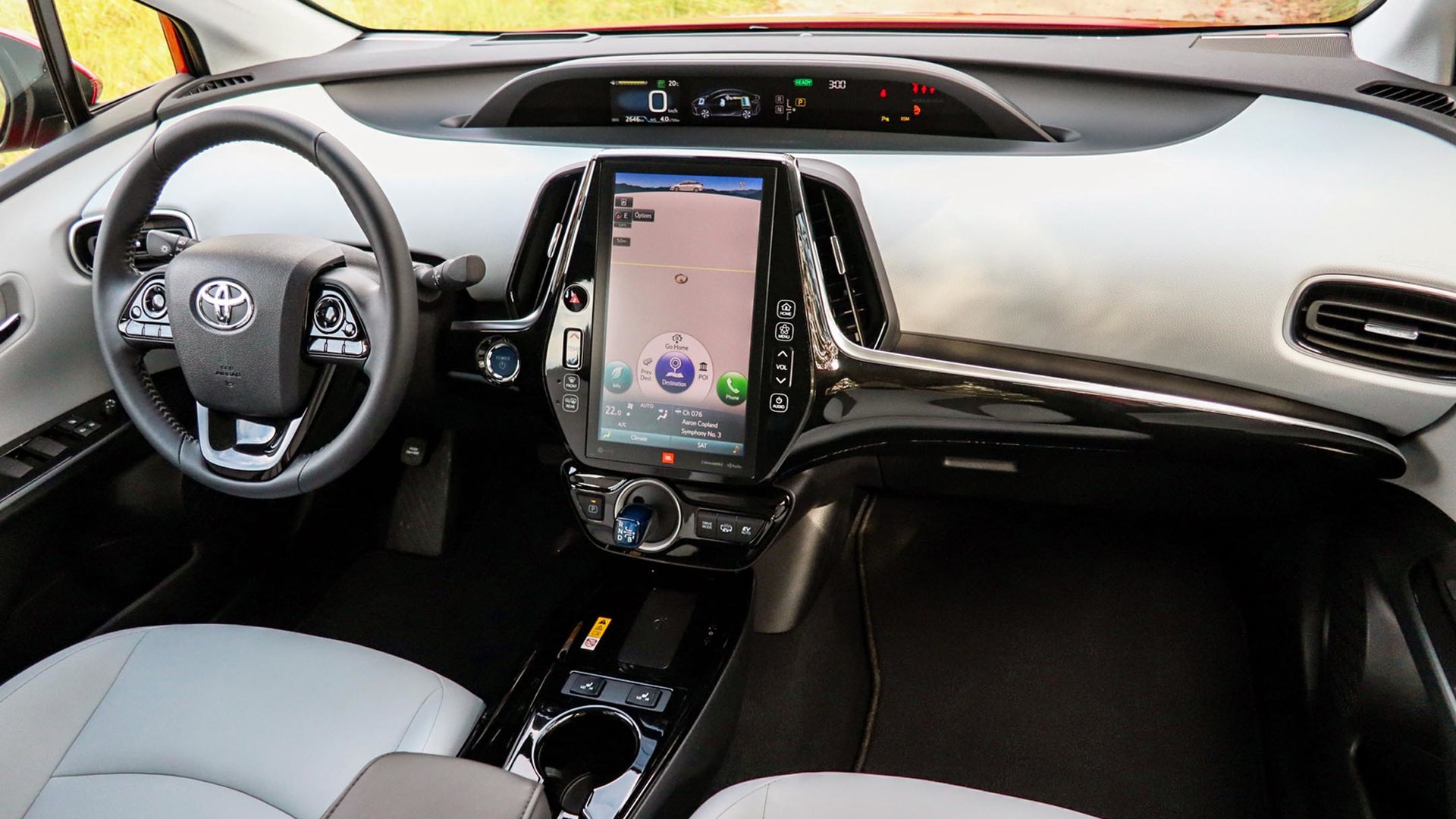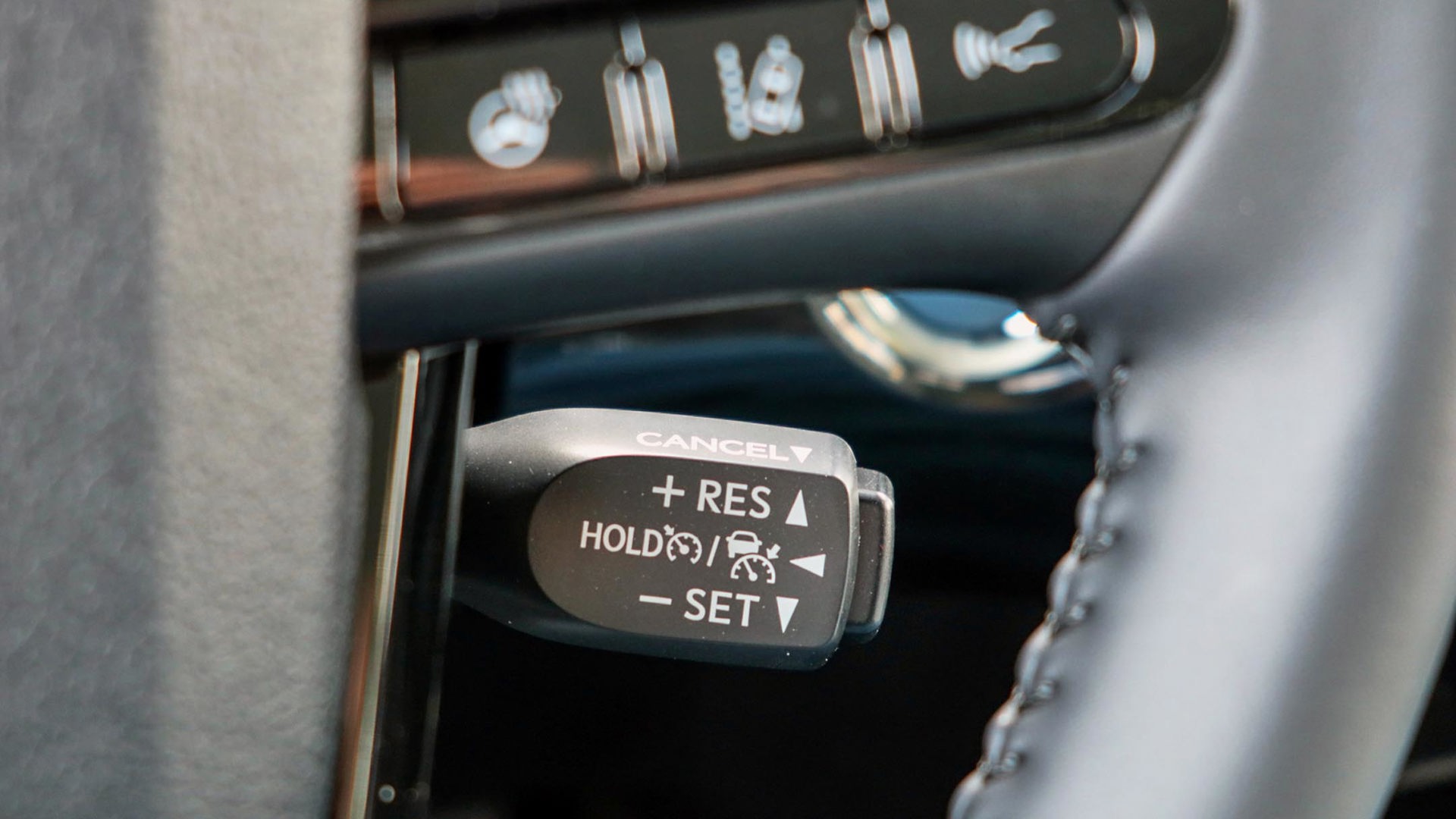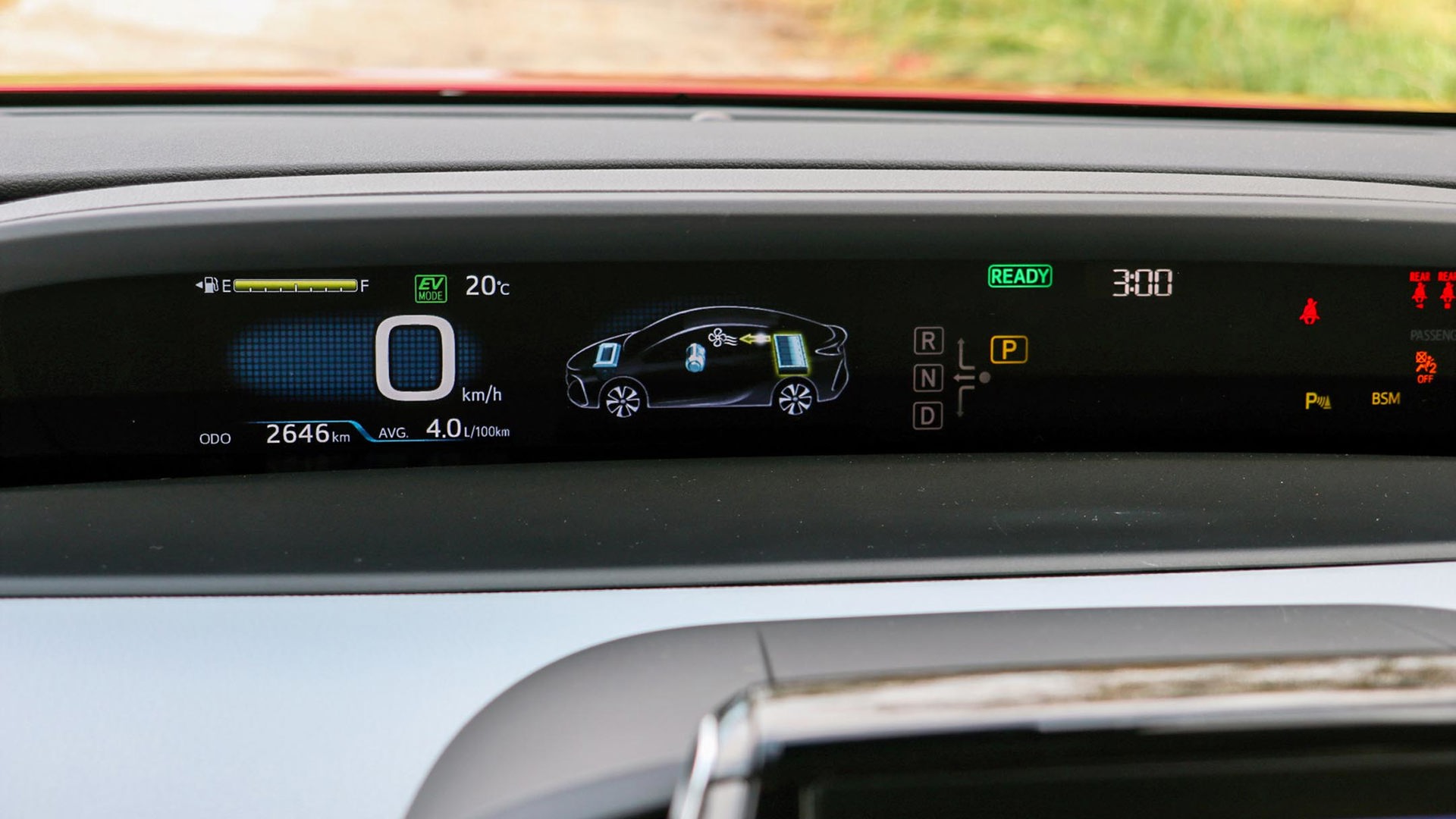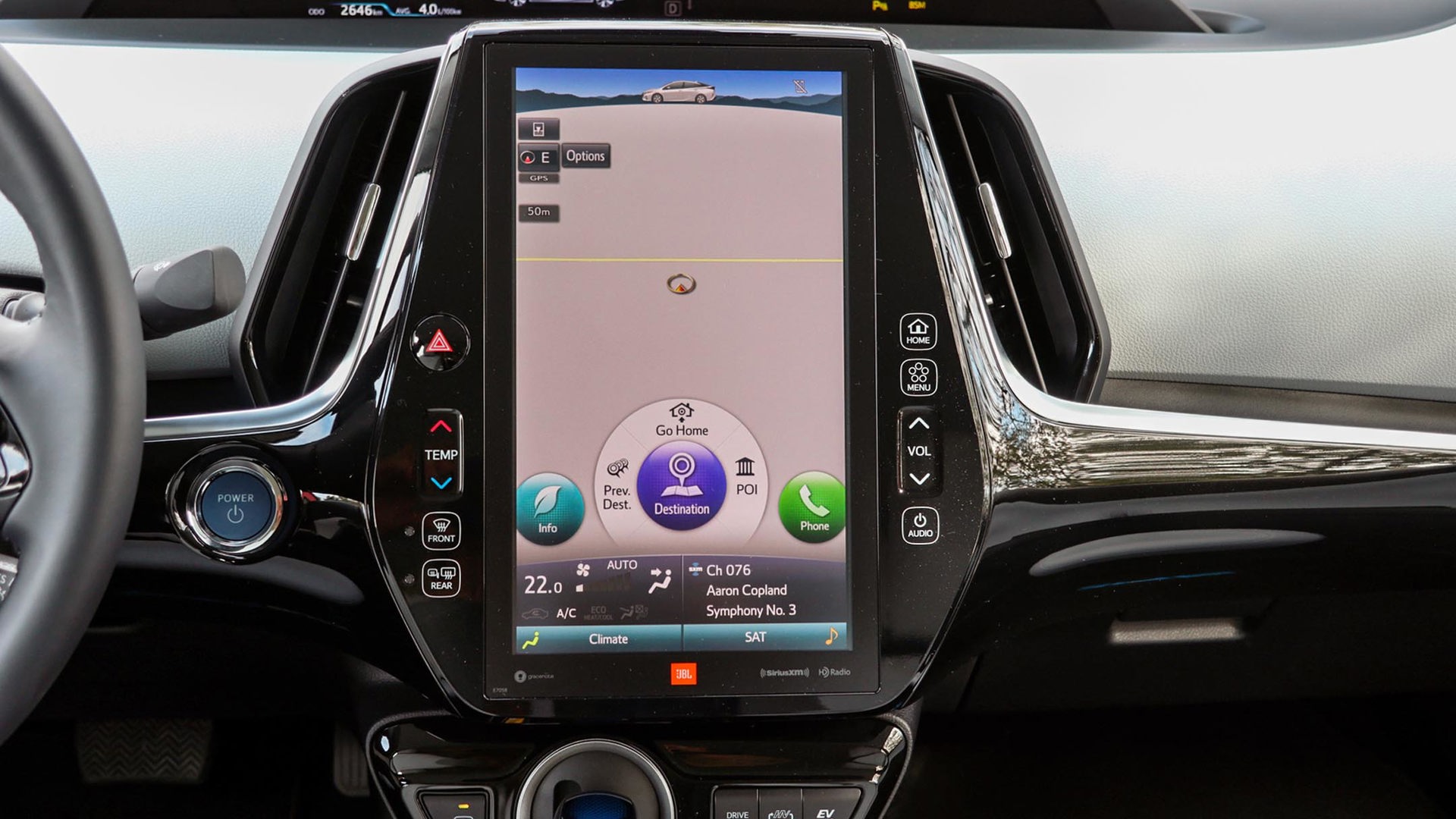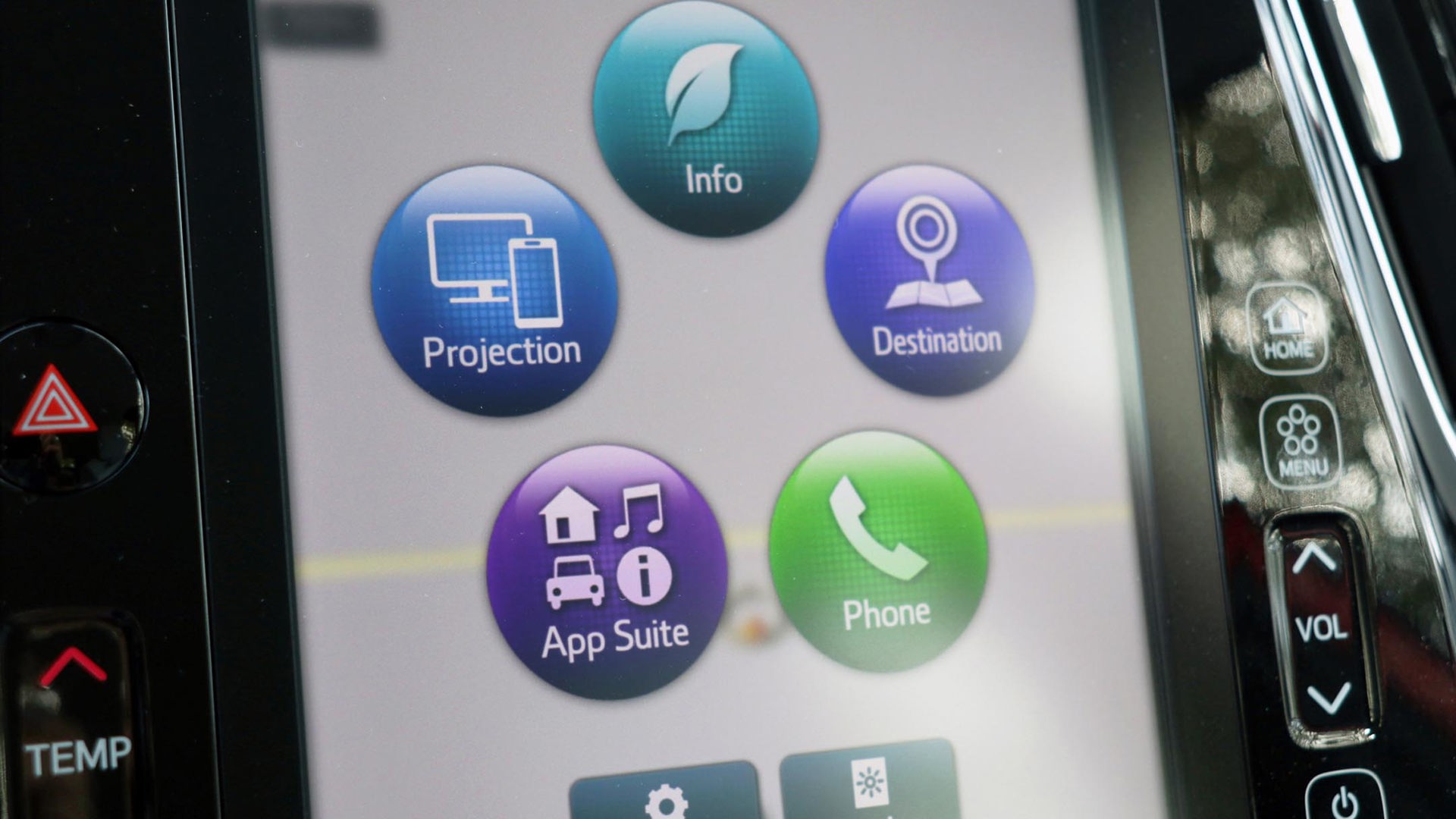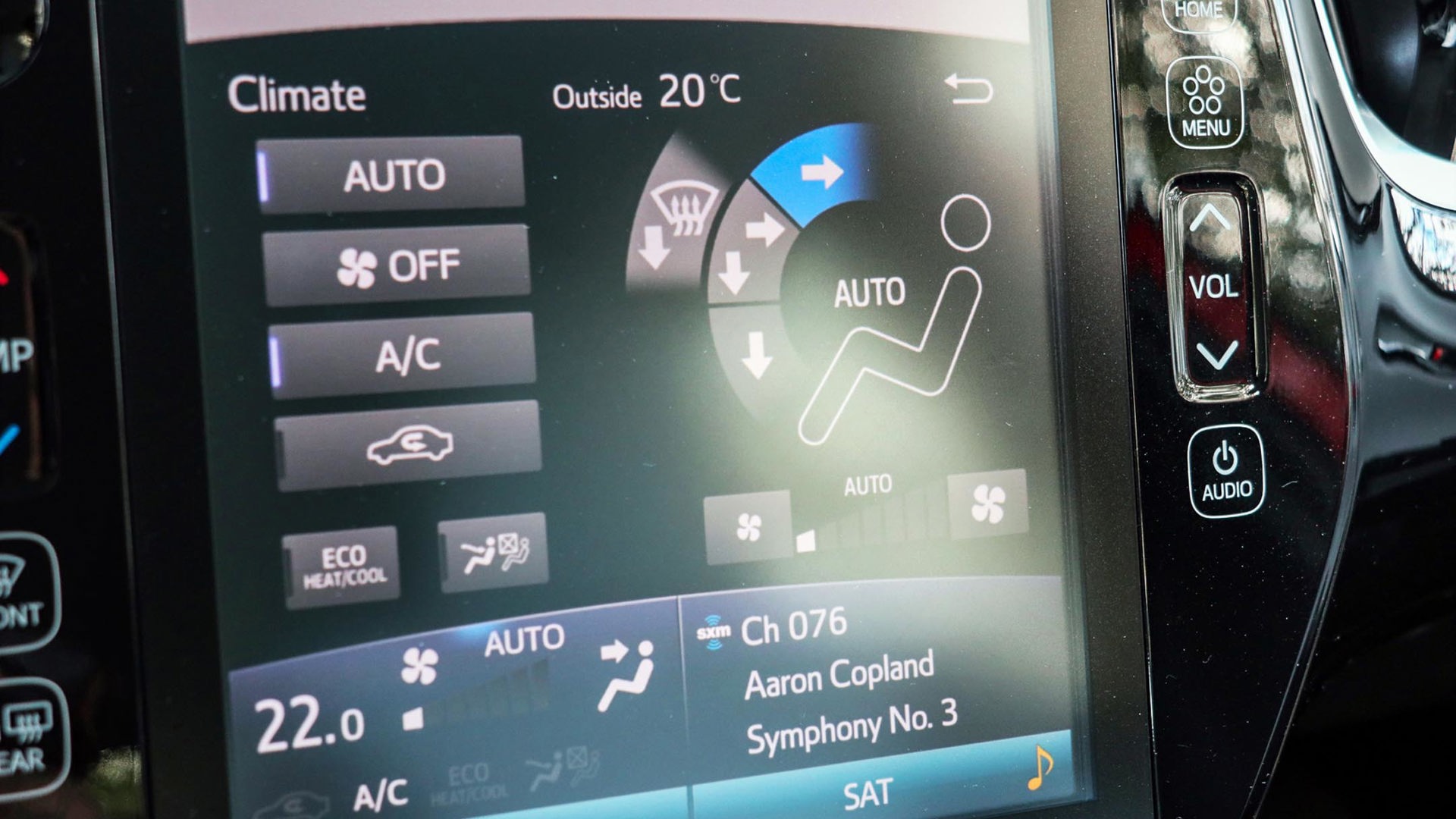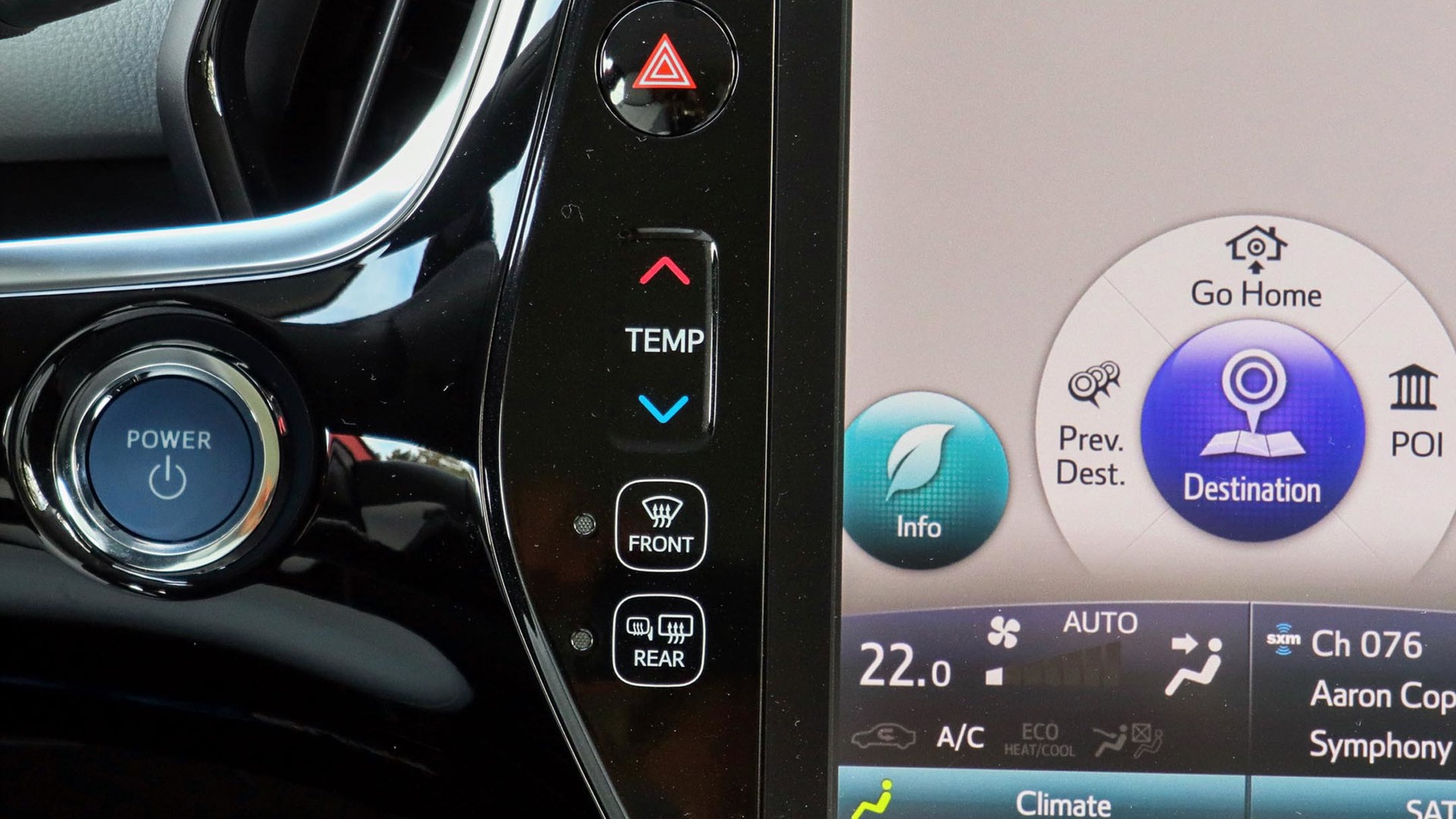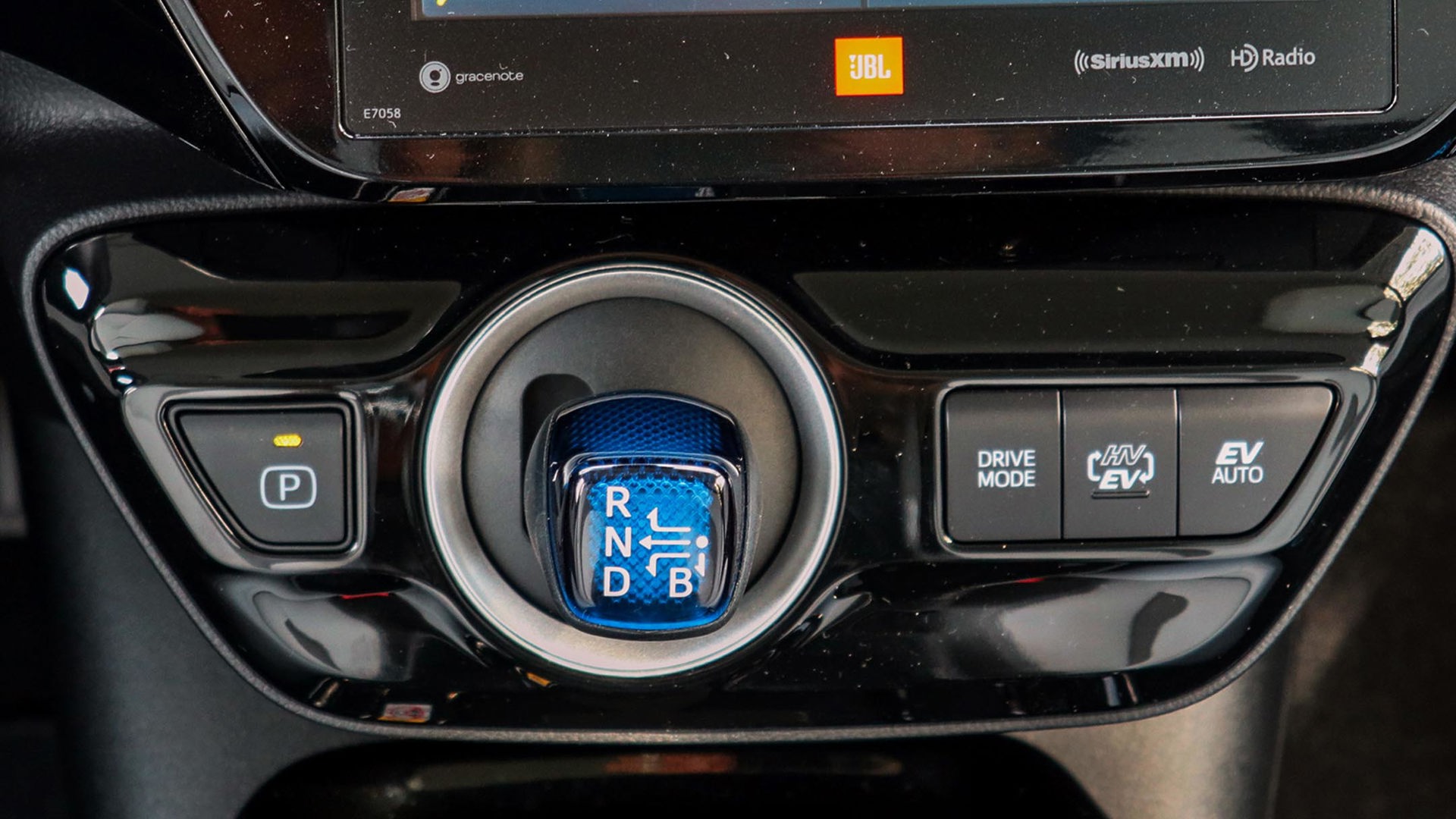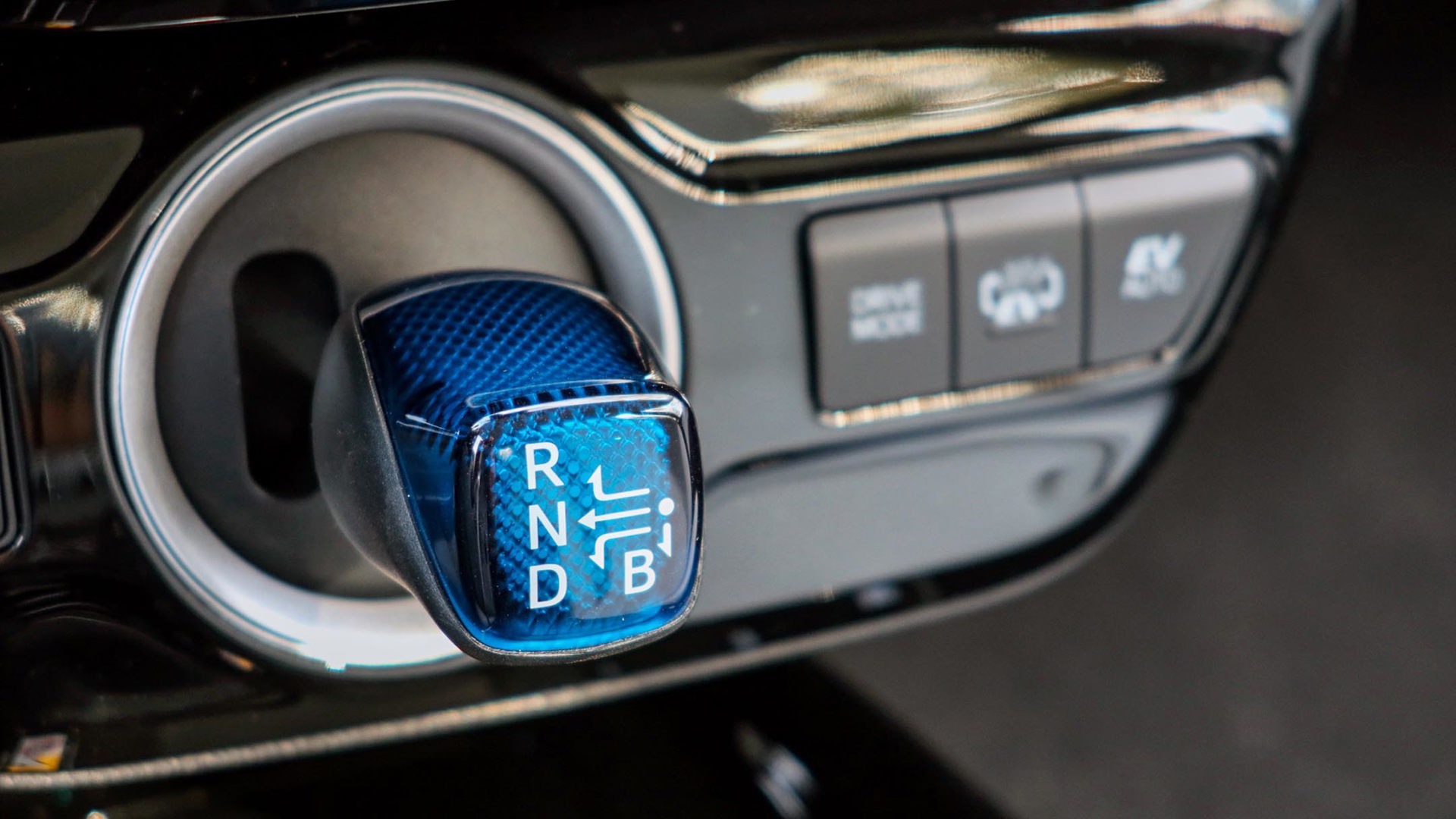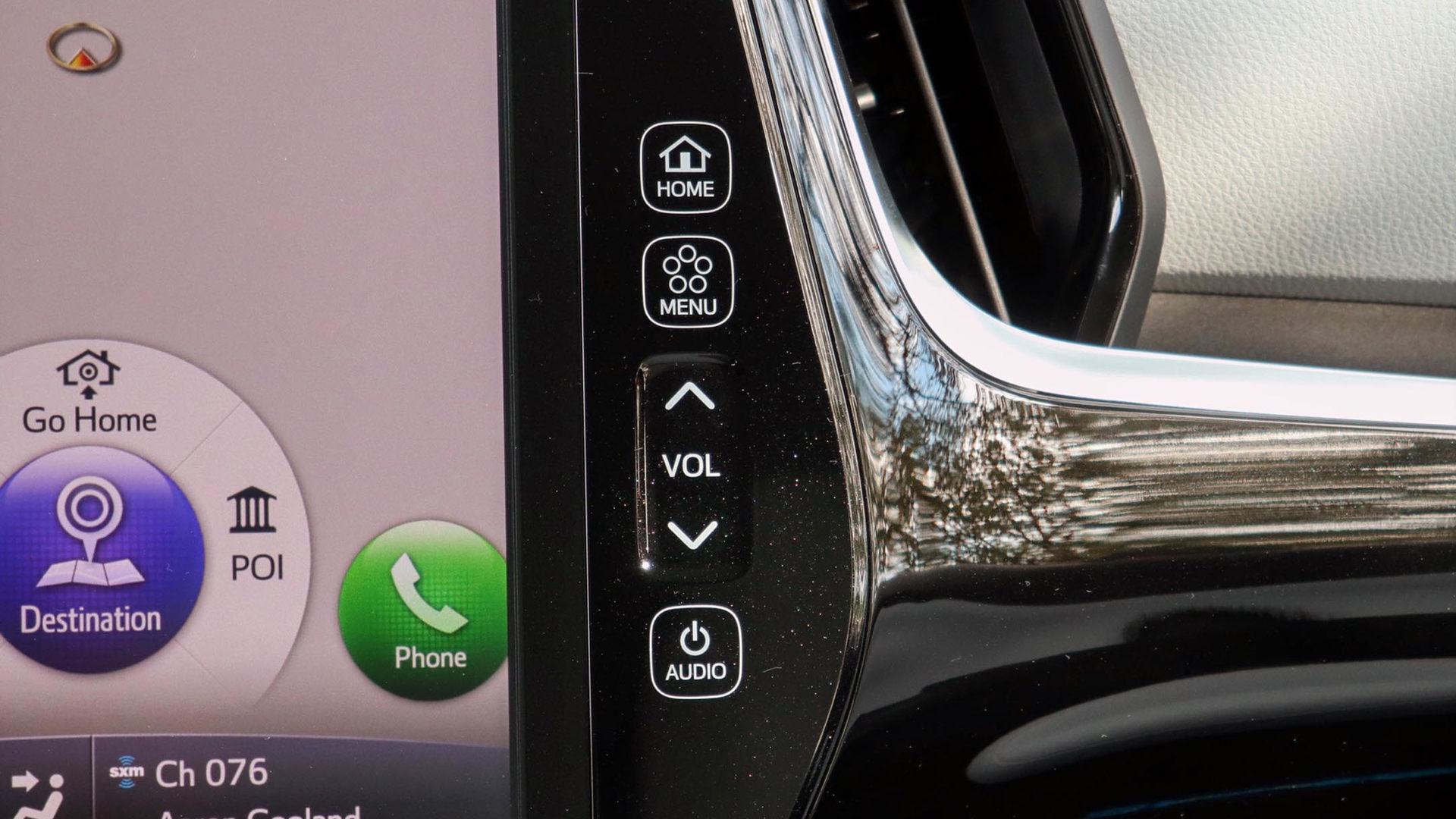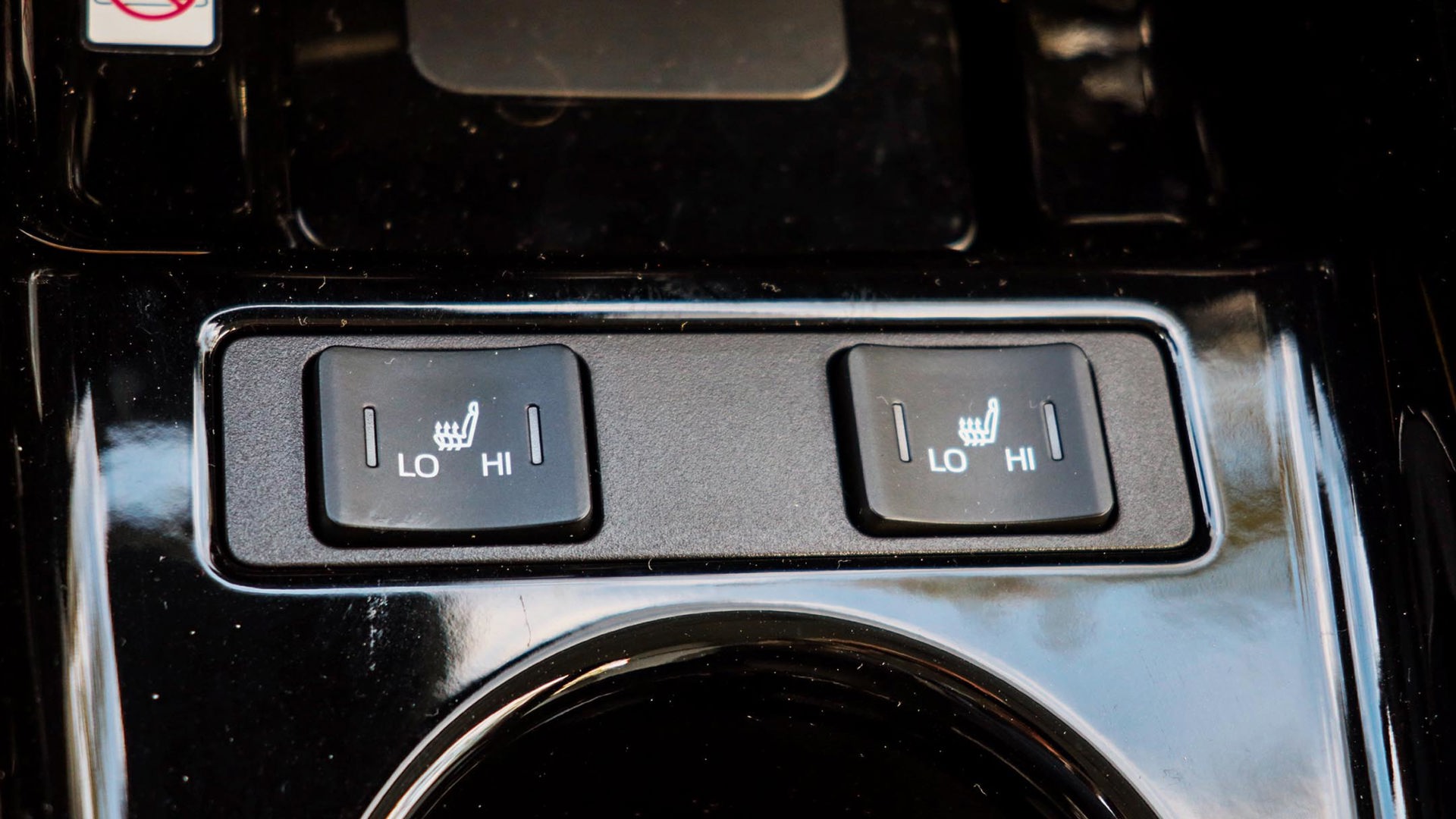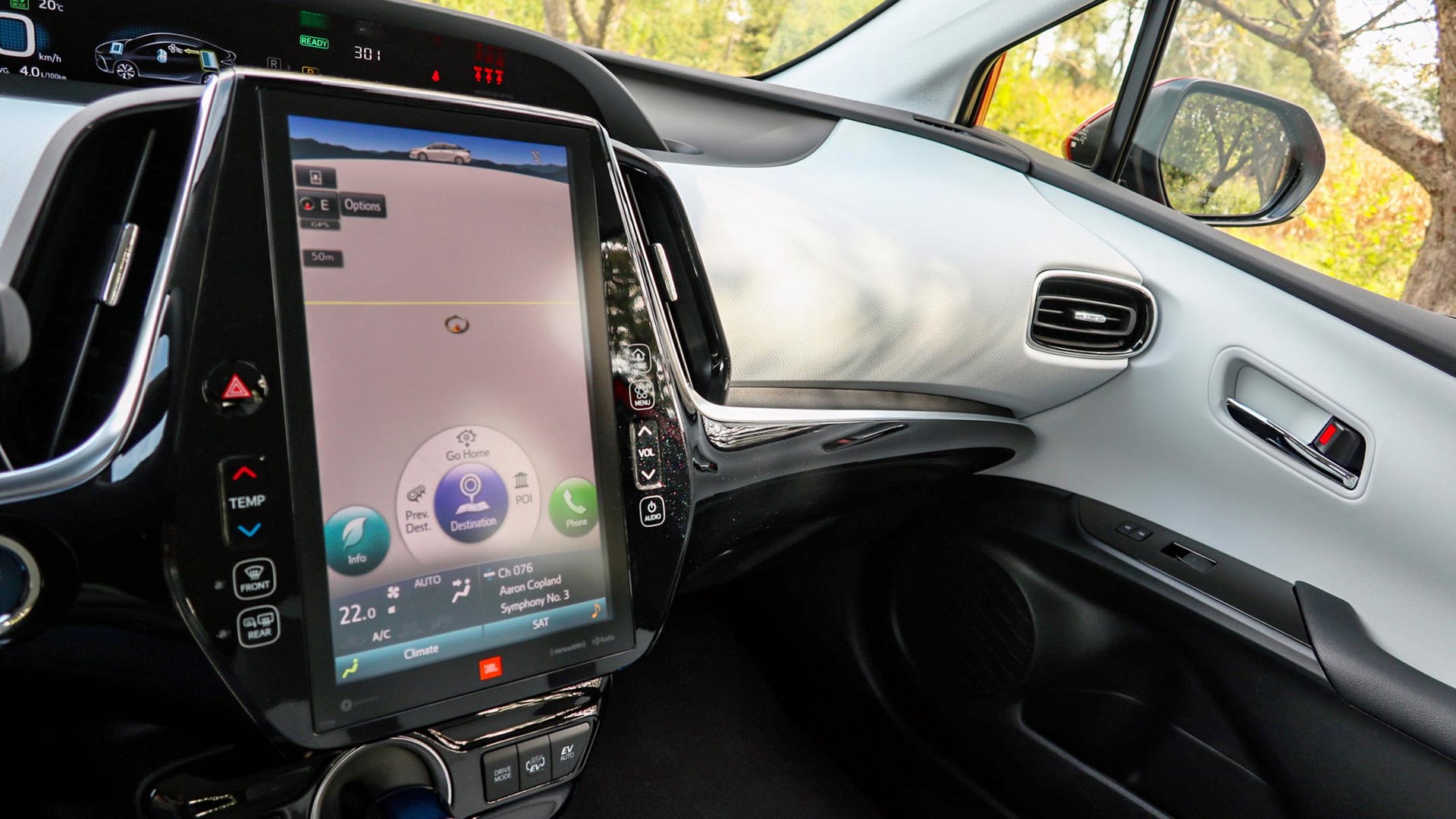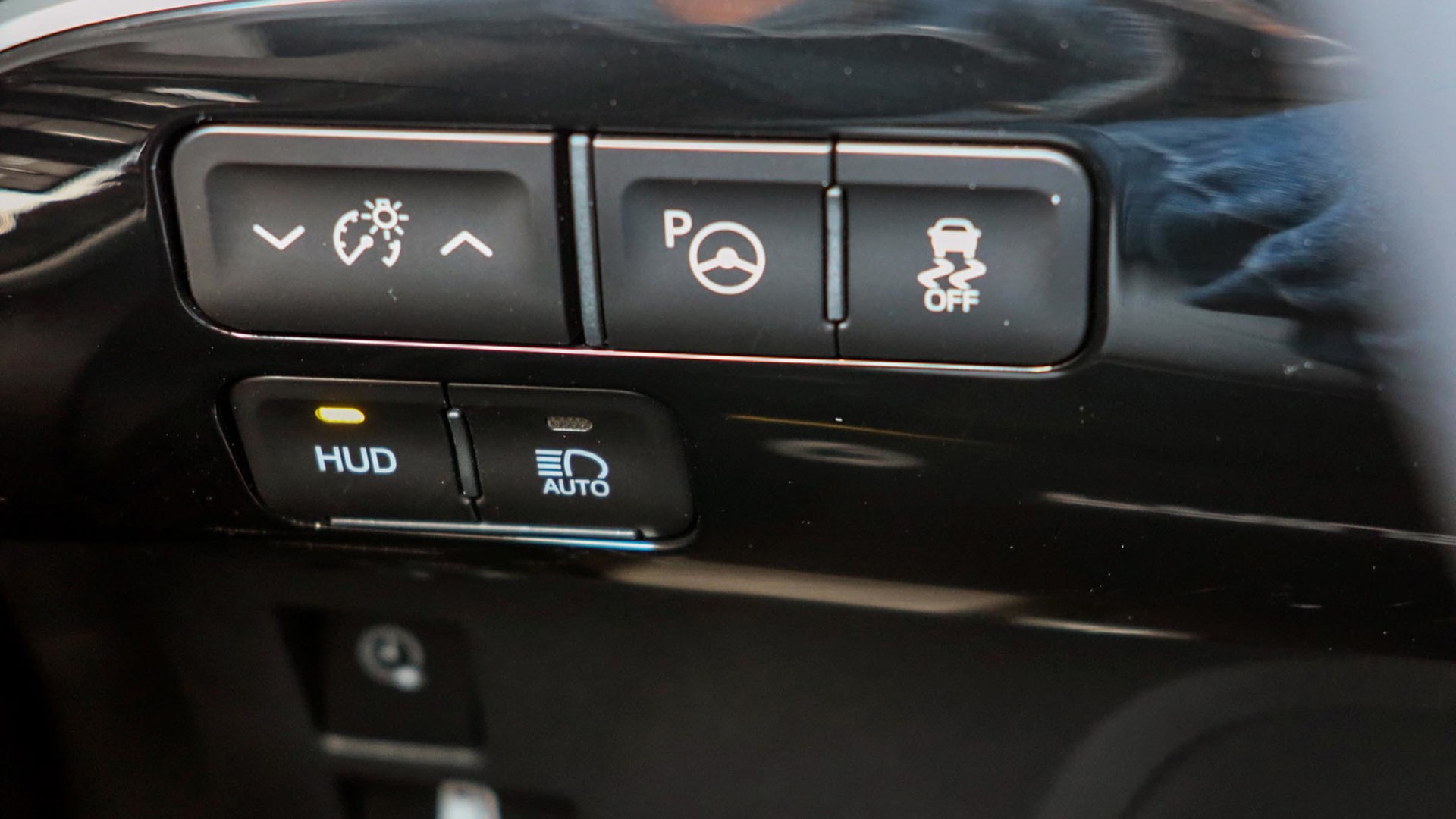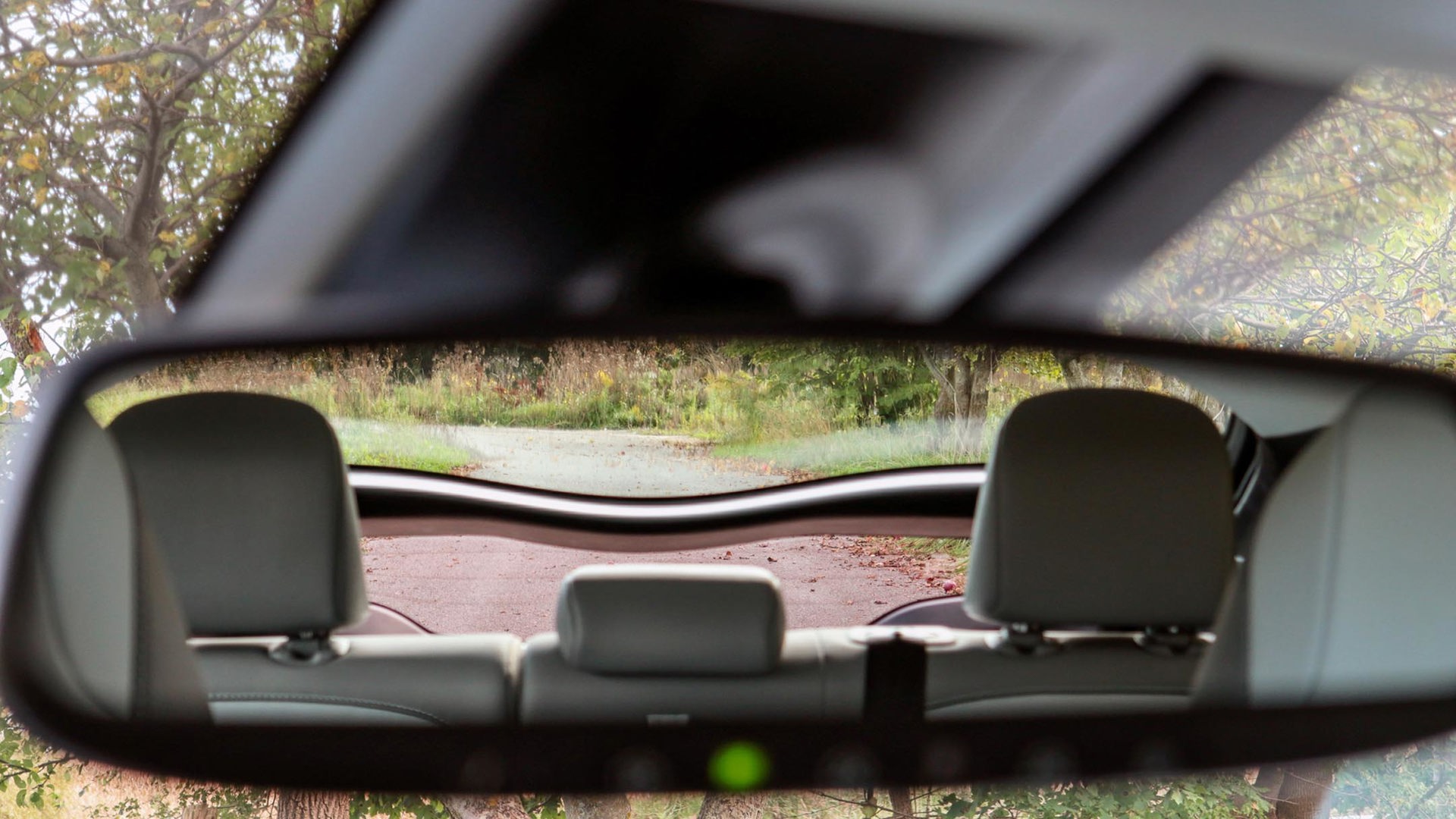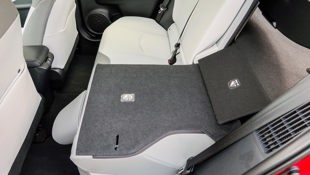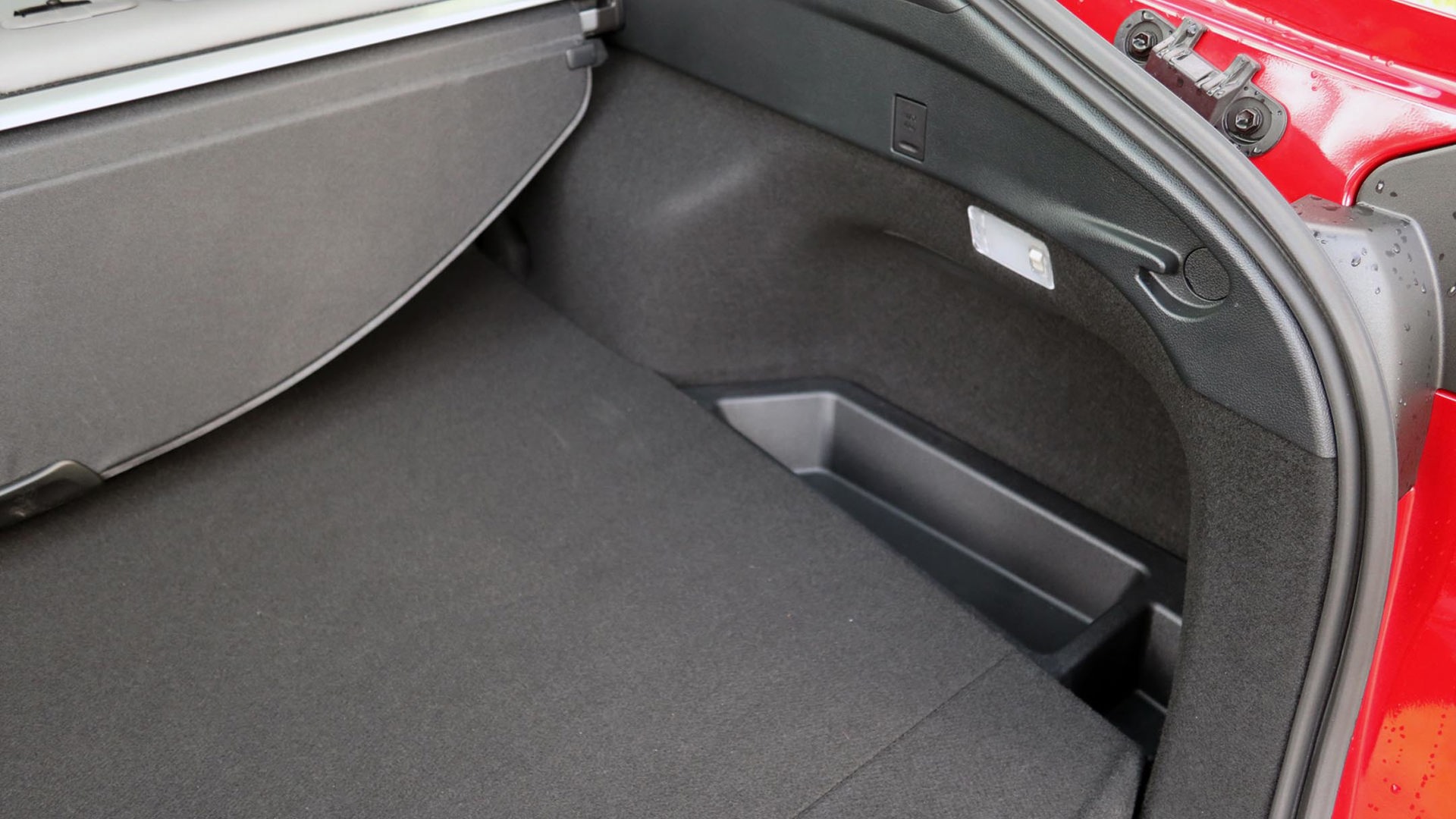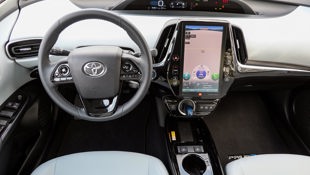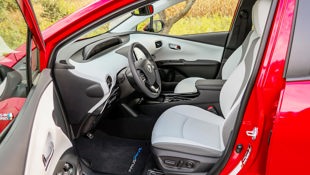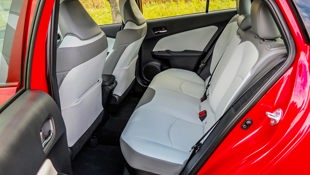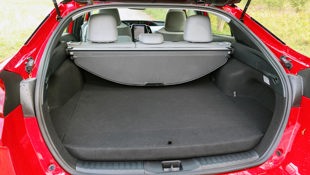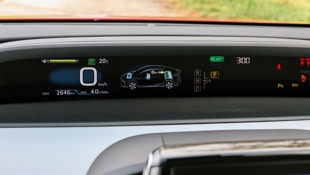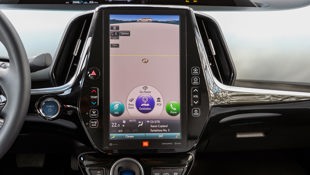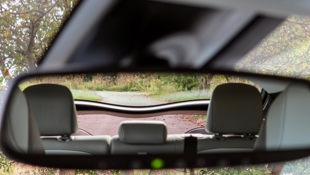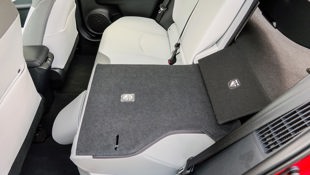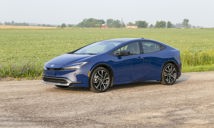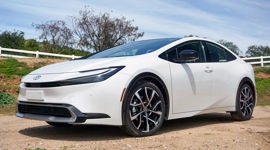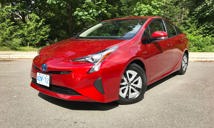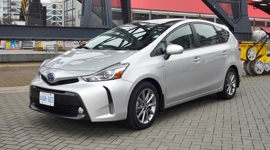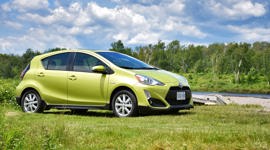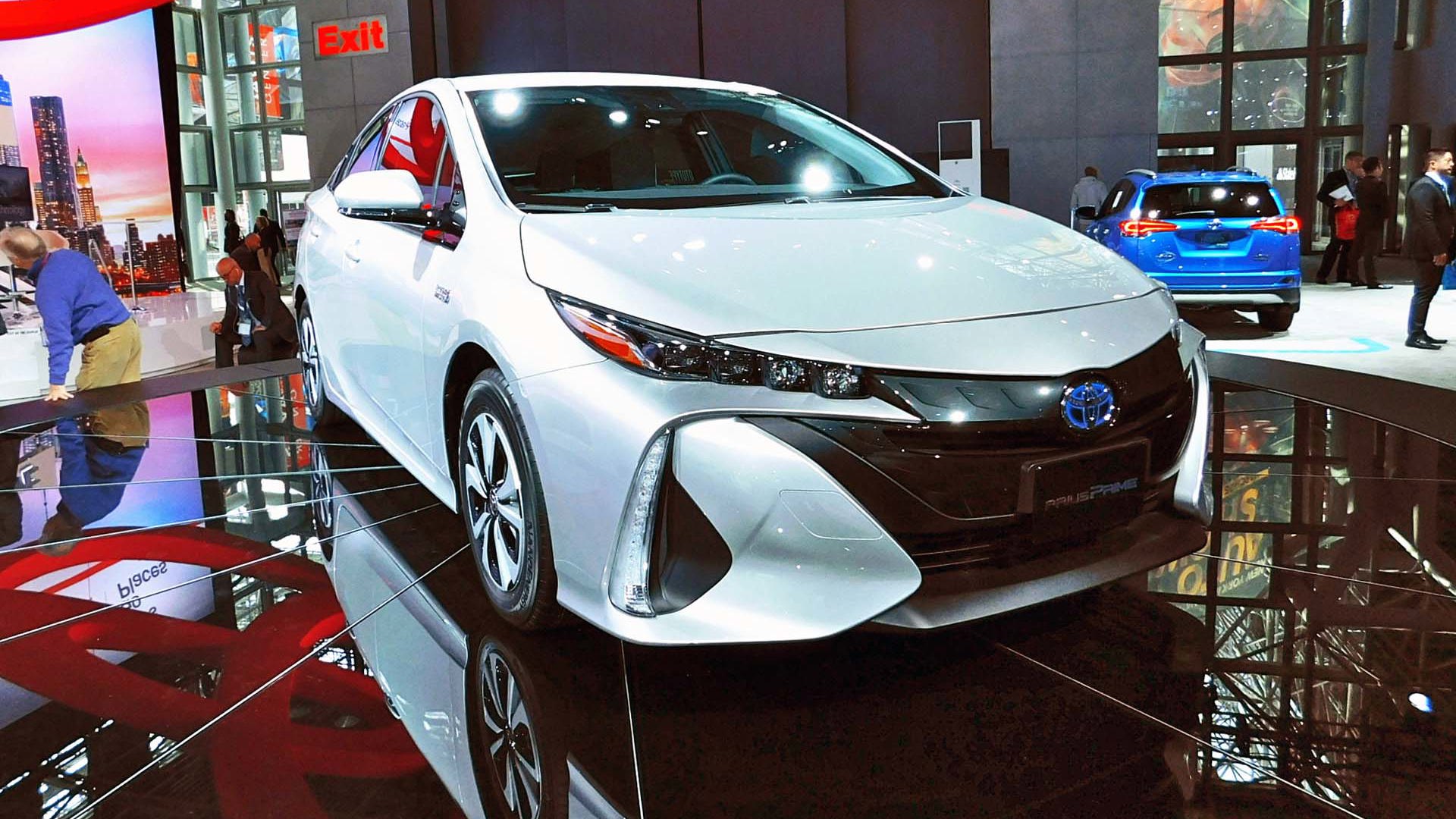 AutoTrader SCORE
AutoTrader SCORE
-
STYLING7/10
-
Safety9/10
-
PRACTICALITY7/10
-
USER-FRIENDLINESS6/10
-
FEATURES8/10
-
POWER8/10
-
COMFORT8/10
-
DRIVING FEEL8/10
-
FUEL ECONOMY9/10
-
VALUE8/10
Electrified vehicles are grabbing all the headlines, but there’s also a middle path by way of the plug-in hybrid (PHEV).
It runs on electricity alone after it’s plugged in, but when that depletes, it reverts to gas-electric hybrid operation. That includes my tester, the 2022 Prius Prime, the latter denoting its plug-in capability over the regular Prius.
The Prius Prime starts at $33,550, while my Upgrade begins at $36,350. I further had a Technology package at $2,350 and a coat of $255 Supersonic Red paint, bringing my tester to $38,955 before taxes and a non-negotiable delivery fee of $1,790.
Styling: 7/10
The Prius has lost most of its out-there design over the years, and while it isn’t handsome, it’s unmistakable. However, because the rear window is so sharply raked, the designers added a second piece of upright glass below it. There’s a thick bar between the two windows, and it cuts down on rearward visibility.
The Prime and Upgrade include 15-inch wheels, heated mirrors, and LED head- and taillights. The move up to the Technology pack then adds unique 15-inch wheels, rain-sensing wipers, and LED fog lights.
Safety: 9/10
The Prius Prime gets the highest five-star rating from the United States National Highway Traffic Safety Administration (NHTSA), while the Insurance Institute for Highway Safety (IIHS) gives it the highest “Good” for all but the passenger-side front overlap crash, where it gets “Acceptable.”
The Prius Prime comes standard with full-speed adaptive cruise control, lane-departure and lane-centring assist, emergency front braking with pedestrian and cyclist detection, automatic high-beam headlights, driver’s knee airbag, front passenger seat cushion airbag, and active front head restraints for whiplash protection. However, you must move to the Upgrade trim to get blind-spot monitoring.
Features: 8/10
The Prius Prime’s entry trim includes automatic climate control, a cargo cover, cloth seats with manual adjustment, a seven-inch touchscreen, Apple CarPlay and Android Auto, satellite radio, and the aforementioned safety features.
The Upgrade adds faux-leather upholstery, driver’s power seat, wireless charging, navigation, and an 11.6-inch centre touchscreen that adds a Toyota’s Connected Services, which gives you access to features through your phone such as unlocking the doors or checking the fuel level, but deletes Android Auto. The optional Technology Package on my tester then added a premium stereo, head-up display, auto-dimming mirror, garage door opener, parking clearance sonar and assist, rain-sensing wipers, LED fog lights, and unique 15-inch wheels.
User Friendliness: 6/10
I would forego the Upgrade trim just to avoid the move to the 11.6-inch touchscreen. The big vertical screen controls many of the vehicle’s functions, with few buttons for quicker access to temperature and stereo volume, and to the home and menu screens.
But there are steps to everything in the screen, from tapping an icon to get to its function, to then actuating that function itself. Besides the multi-step process, the screen’s major drawback is that whenever the sun hits it – a very common occurrence, given how much real estate it occupies in the dash – it glares out. You can’t see the navigation map, or change the climate mode or radio station, or access your phone functions, because you can’t see the screen.
Practicality: 7.5/10
The Prius enjoys the inherent practicality of a hatchback. However, because of its extra battery placement, the Prime has only 561 L of cargo space versus 697 L in the regular Prius. The rear seats fold to increase the cargo area, but they drop down below the higher floor, so you don’t get a completely flat surface all the way through.
Comfort: 8/10
The Prime Upgrade’s faux-leather seats are comfortable, and they and the steering wheel are heated. At this price, though, I’d be happier with dual-zone climate control, rather than single. But I did appreciate the power-adjustable seat, and was able to find a good position for visibility.
Front-seat legroom is good, given the car’s size, and all but the very tallest rear-seat passengers will have a comfortable ride as well. The ride is smooth and the cabin is quiet as well.
Power: 8/10
The Prius uses a 1.8L four-cylinder that makes 95 hp and 105 lb-ft of torque on its own, and a net 121 hp when combined with the hybrid system. The big deal here, of course, is that plug-in capability. The Prime has a Natural Resources Canada (NRCan) rating of 40 km on electricity alone when fully charged.
If the car is plugged in regularly – about 5.5 hours on regular 120-volt household current, or two hours on a Level 2 (240-volt) home or public charger – many drivers will have enough for the daily commute. Then, when that depletes, the system automatically switches to gas-electric hybrid operation. Unlike with an all-electric car, the Prius Prime will continue running as long as it has fuel in the tank, and it’s easier to find a gas station than a charging station.
Driving Feel: 8/10
The Prius drives and handles similarly to most compact mainstream commuter cars. There’s not a lot of steering feel, but it takes corners smoothly and feels well-planted. The only exception is when the steering-assist system is activated with the adaptive cruise control; the wheel makes jerky little corrections as it adjusts to stay in the middle of the lane.
The automatic continuously variable transmission (CVT) is operated by a little shifter on the dash, which annoyingly requires you to press a separate button for park. The shifter includes a setting that increases the rate of regenerative braking and feeds more power back to the battery. The Prime can be set into EV auto, which adds the gas engine as needed for extra power, without using up as much of the stored charge. You can also “save” the charge for when it’s most advantageous, such as driving on the highway in hybrid operation, and then switching to electric-only on city streets.
Fuel Economy: 9.5/10
NRCan rates plug-in hybrids both on gas and on Le/100 km, for litres equivalent, the approximate comparison of electric to gasoline energy. The Prime is rated 1.8 Le/100 km on electricity, while as a hybrid, it’s 4.3 L/100 km in the city, 4.4 on the highway, and 4.3 combined. In my week with it, plugging it in faithfully but with a couple of longer highway trips on hybrid operation, I averaged 2.2 L/100 km. The range on electric-only depends on numerous factors, including ambient temperature, heater or A/C use, and how you drive.
Among the segment’s contenders, the Hyundai Ioniq PHEV rates 2.0 Le/100 km, 4.5 L/100 km combined, and has an official electric range of 47 km. The Kia Niro PHEV is rated at 2.2 Le/100 km, at 5.1 L/100 km combined, and has a range of 42 km.
Value: 8/10
There still aren’t a lot of plug-in cars on the market, but the Prius Prime is pretty much in line with its competitors, with prices ranging from $33,550 to $38,700. The Ioniq spans from $32,649 to $38,249 across three trims, while the Niro’s three trims are $34,495 to $38,995. None of those prices include freight.
The Prius Prime includes an eight-year/160,000 km warranty on hybrid components, while the battery is covered for 10 years or 240,000 km.
The Verdict
PHEVs are pricier than their hybrid equivalents, but if you’re able and willing to charge one regularly, I think it’s the best of both worlds. You get fuel-free driving that may be enough for some or all of your commute, but if you can’t charge, your car still runs. If you want electric without worrying about range, give this Toyota a look.
| Engine Displacement | 1.8L |
|---|---|
| Engine Cylinders | I4 |
| Peak Horsepower | 95 hp @ 5,200 rpm gas engine only, 121 hp hybrid |
| Peak Torque | 105 lb-ft @ 3,600 rpm |
| Fuel Economy | 4.3 / 4.4 / 4.3 L/100 km cty/hwy/cmb; 1.8 Le/100 km electric only, combined |
| Cargo Space | 561 L |
| Model Tested | 2022 Toyota Prius Prime Upgrade |
| Base Price | $36,350 |
| A/C Tax | $100 |
| Destination Fee | $1,790 |
| Price as Tested | $40,845 |
|
Optional Equipment
$2,605 – Technology Package, $2,350; Supersonic Red paint, $255
|
|
